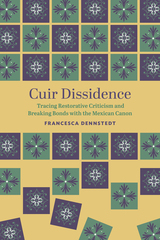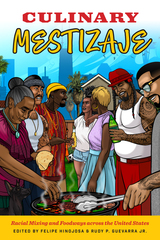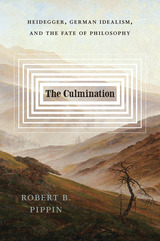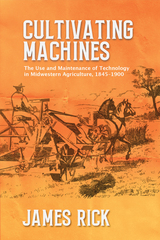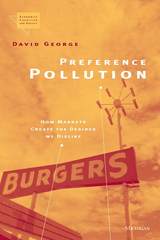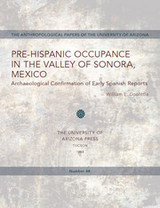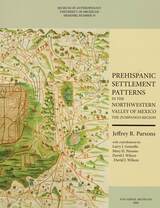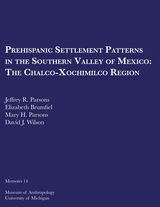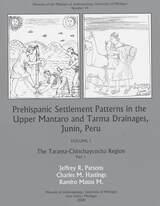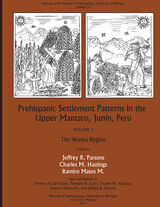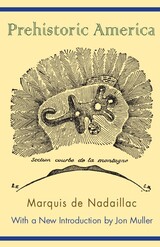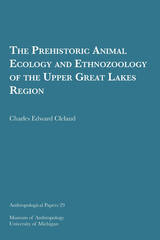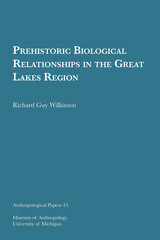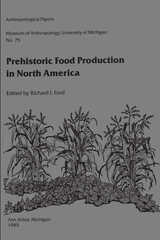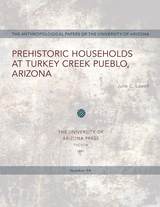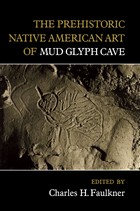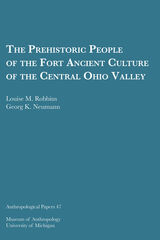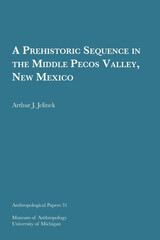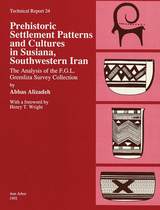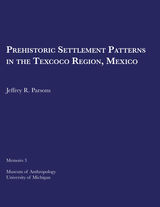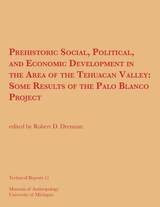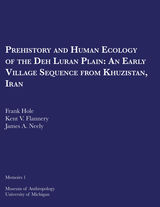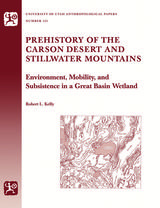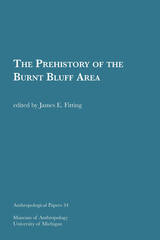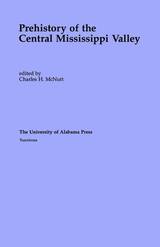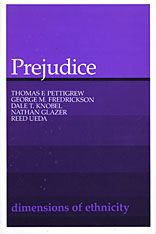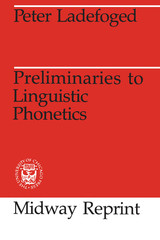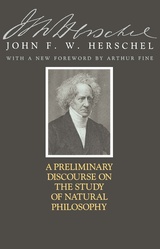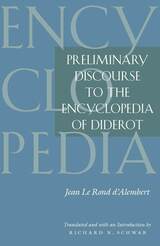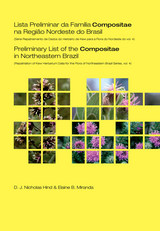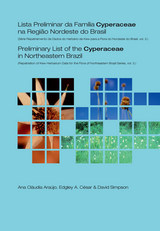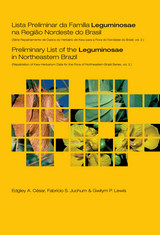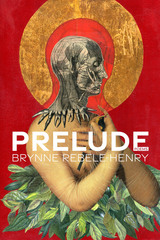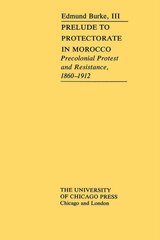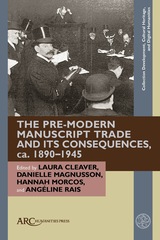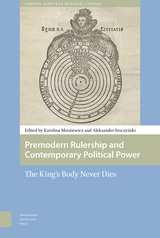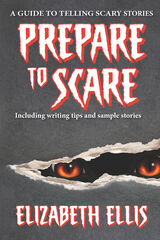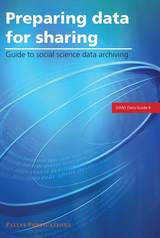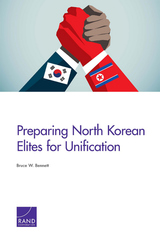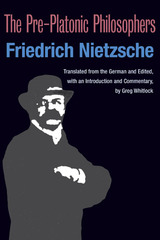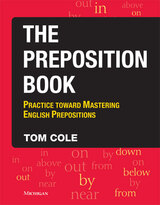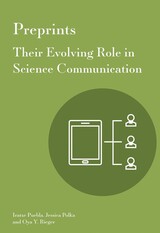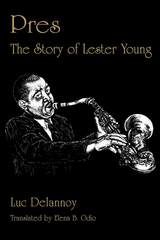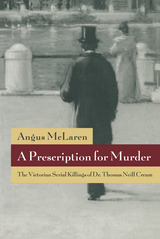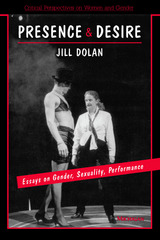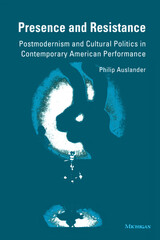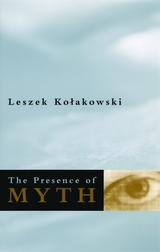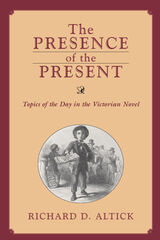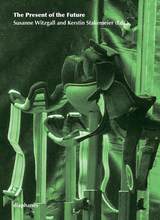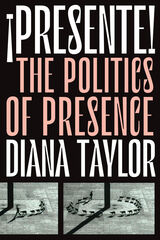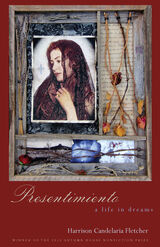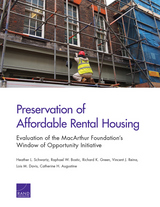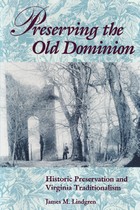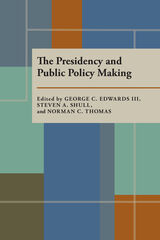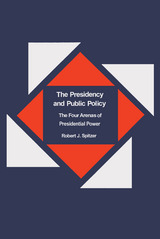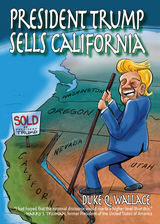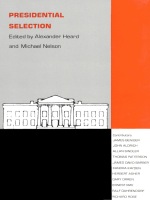 A Preface to Theology
W. Clark Gilpin
University of Chicago Press, 1996 At a time of widespread perplexity about the social role of humanistic scholarship, few disciplines are as anxious about their nature and purposes as academic theology. In this important work, W. Clark Gilpin, dean of the University of Chicago Divinity School, proposes that American theological scholarship become responsible to a threefold public: the churches, the academic community, and civil society.
Gilpin approaches this goal indirectly, by investigating the historic social roles of Protestant theologians and the educational institutions in which they have pursued their scholarship and teaching. Ranging from analyses of the New England Puritan Cotton Mather to contemporary theologians as "public intellectuals," Gilpin proposes that we find out what theology is by asking what theologians do.
By showing how particular cultural problems have always shaped the work of theologians, Gilpin's work profoundly illuminates the foundations of American academic theology, providing insights that will help guide its future.
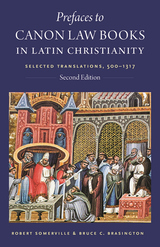 Prefaces to Canon Law Books in Latin Christianity: Selected Translations, 500-1317, second edition
Robert Somerville
Catholic University of America Press, 2021 An updated and expanded version of the original edition, published in 1998. That original edition went up through 1245. This new version extends to 1317 and adds two important prefaces.
Praise for the First Edition
“Both students and specialists can be grateful to the authors for this major contribution in English to the study of medieval canon law. It is a clear statement--one emphasized by the late John Gilchrist-that because of its critical importance in medieval life and culture canon law should not remain the obscure domain of specialists, but should be shared with students and non-specialists alike.” – The American Journal of Legal History
“[A] learned and useful book, which for the first time assembles a body of canonistic prefaces, presents them in an accessible form, and provides students of medieval canonical thought with a valuable new resource for study and teaching.” – The Catholic Historical Review
“This volume is an important and welcome addition to a field of studies where translations into English are few and far between. The breadth of the works selected, the quality of the translations, and the attention to detail that has long characterized the work of both editors make this a valuable resource for specialist and student alike.” – Church History
“A welcome combination: a text that is informative for students and professionals alike. The translations succeed in rendering accessible to a general audience some otherwise highly inaccessible material. Somerville and Brasington are to be greatly commended for undertaking this very original enterprise and bringing it to successful parturition.” – Journal of Law and Religion
“Somerville and Brasington have chosen to let their compilers and commentators speak for themselves. In doing so, they have had to wrestle with often obscure Latin and frequently less than satisfactory editions. That they succeed in making these texts intelligible through translation and annotation is no small feat.” – Sixteenth Century Journal
“This is a significant, elegantly presented contribution to the field of theology, cultural history, and canon law.” – Theological Studies
 Prefaces to Shakespeare
Tony Tanner
Harvard University Press, 2010 When Tony Tanner died in 1998, the world lost a critic who was as sensitive a reader of Jane Austen as he was of Thomas Pynchon, and who wrote with a warmth and clarity that belied his fluency in literary theory.
In the final ten years of his life Tanner tackled the largest project any critic in English can take on—writing a preface to each of Shakespeare’s plays. This collection serves as a comprehensive introduction for the general reader, the greatest and perhaps the last in the line of great introductions to Shakespeare written by such luminaries as Samuel Johnson and Samuel Taylor Coleridge. Tanner brings Shakespeare to life, explicating everything from big-picture issues such as the implications of shifts in Elizabethan culture to close readings of Shakespeare’s deployment of complex words in his plays.
Although these prefaces are written for a general audience, there is much value for the scholar as well. Tanner introduces some of the most significant recent and historical scholarship on Shakespeare to show the reader how certain critics frame large issues in a useful way. This scholarly generosity permits Johnson, Hazlitt, Emerson, Thoreau, Ruskin, Pater, and many others to enter into conversation. The Independent said of the project, “All of Tanner’s life and education had prepared him for this task and the results are magnificent—both accessible and erudite.”
Preference Pollution: How Markets Create the Desires We Dislike
David George
University of Michigan Press, 2004
Seldom considered is whether markets do an adequate job of shaping our tastes. David George argues that they do not, and that the standard economic definition of efficiency can be used to demonstrate that the market ignores people's desires about their desires. He concludes that markets perform poorly with respect to second-order preferences, thus worsening the problem of undesired desires. The book further investigates changes in perceptions and public policy toward such activities as gambling, credit, entertainment, and sexual behavior.
David George is Chair and Professor Economics, LaSalle University.
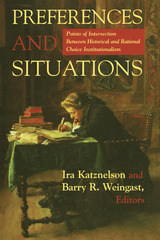 Preferences and Situations: Points of Intersection Between Historical and Rational Choice In.
Ira Katznelson
Russell Sage Foundation, 2005 A scholarly gulf has tended to divide historians, political scientists, and social movement theorists on how people develop and act on their preferences. Rational choice scholars assumed that people—regardless of the time and place in which they live—try to achieve certain goals, like maximizing their personal wealth or power. In contrast, comparative historical scholars have emphasized historical context in explaining people's behavior. Recently, a common emphasis on how institutions—such as unions or governments—influence people's preferences in particular situations has emerged, promising to narrow the divide between the two intellectual camps. In Preferences and Situations, editors Ira Katnelson and Barry Weingast seek to expand that common ground by bringing together an esteemed group of contributors to address the ways in which institutions, in their wider historical setting, induce people to behave in certain ways and steer the course of history. The contributors examine a diverse group of topics to assess the role that institutions play in shaping people's preferences and decision-making. For example, Margaret Levi studies two labor unions to determine how organizational preferences are established. She discusses how the individual preferences of leaders crystallize and become cemented into an institutional culture through formal rules and informal communication. To explore how preferences alter with time, David Brady, John Ferejohn, and Jeremy Pope examine why civil rights legislation that failed to garner sufficient support in previous decades came to pass Congress in 1964. Ira Katznelson reaches back to the 13th century to discuss how the institutional development of Parliament after the signing of the Magna Carta led King Edward I to reframe the view of the British crown toward Jews and expel them in 1290. The essays in this book focus on preference formation and change, revealing a great deal of overlap between two schools of thought that were previously considered mutually exclusive. Though the scholarly debate over the merits of historical versus rational choice institutionalism will surely rage on, Preferences and Situations reveals how each field can be enriched by the other.
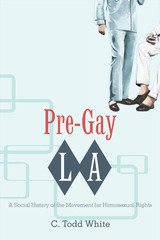 Pre-Gay L.A.: A Social History of the Movement for Homosexual Rights
C. Todd White
University of Illinois Press, 2008 This book explores the origins and history of the modern American movement for homosexual rights, which originated in Los Angeles in the late 1940s and continues today. Part ethnography and part social history, it is a detailed account of the history of the movement as manifested through the emergence of four related organizations: Mattachine, ONE Incorporated, the Homosexual Information Center (HIC), and the Institute for the Study of Human Resources (ISHR), which began doing business as ONE Incorporated when the two organizations merged in 1995. Pre-Gay L.A. is a chronicle of how one clandestine special interest association emerged as a powerful political force that spawned several other organizations over a period of more than sixty years. Relying on extended interviews with participants as well as a full review of the archives of the Homosexual Information Center, C. Todd White unearths the institutional histories of the gay and lesbian rights movement and the myriad personalities involved, including Mattachine founder Harry Hay; ONE Magazine editors Dale Jennings, Donald Slater, and Irma Wolf; ONE Incorporated founder Dorr Legg; and many others. Fighting to decriminalize homosexuality and to obtain equal rights, the viable organizations that these individuals helped to establish significantly impacted legal policies not only in Los Angeles but across the United States, affecting the lives of most of us living in America today.
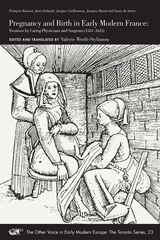 Pregnancy and Birth in Early Modern France: Treatises by Caring Physicians and Surgeons (1581–1625)
François Rousset, Jean Liebault, Jacques Guillemeau, Jacques Duval, and Louis de Serres
Iter Press, 2013 These texts were written in the vernacular for a readership of physicians and surgeons but also of midwives and lay women. So they present important evidence that, contrary to stereotypes, women were the recipients of medical texts written specifically for them. More generally, these texts demonstrate a strong interest in women’s health, indicating that early modern physicians and surgeons had a new interest in the specificity of female anatomy and women’s diseases. The texts selected and translated in this volume allow the reader to access an important group of primary sources on issues related to women’s health, including childbirth and caesarean section, sterility, miscarriage, breastfeeding, etc. The selection of texts is well organized and coherent, the translation is accurate and fluent, and the texts are adequately annotated, so the book will be easily used by scholars and students, including undergraduates. It provides evidence of a new concern and attention for women’s health needs, which, most interestingly, often went hand-in-hand with the rejection of misogynist stereotypes and the challenging of conventional views of female subordination and inferiority.
—Gianna Pomata
Professor of the History of Medicine, Johns Hopkins University
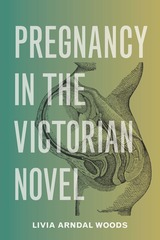 Pregnancy in the Victorian Novel
Livia Arndal Woods
Ohio State University Press, 2023 In Pregnancy in the Victorian Novel—the first book-length study of the topic—Livia Arndal Woods traces the connections between literary treatments of pregnancy and the medicalization of pregnancy and childbirth occurring over the long nineteenth century. Woods uses the problem of pregnancy in the Victorian novel (in which pregnancy is treated modestly as a rule and only rarely as an embodied experience) to advocate for “somatic reading,” a practice attuned to impressions of the body on the page and in our own messy lived experiences. Examining works by Emily Brontë, Charlotte Mary Yonge, Anthony Trollope, George Eliot, Thomas Hardy and others, Woods considers instances of pregnancy that are tied to representations of immodesty, poverty, and medical diagnosis. These representations, Woods argues, should be understood in the arc of Anglo-American modernity and its aftershocks, connecting backward to early modern witch trials and forward to the criminalization of women for pregnancy outcomes in twenty-first-century America. Ultimately, she makes the case that by clearing space for the personal and anecdotal in scholarship, somatic reading helps us analyze with uncertainty rather than against it and allows for richer and more relevant textual interpretation.
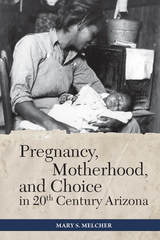 Pregnancy, Motherhood, and Choice in Twentieth-Century Arizona
Mary S. Melcher
University of Arizona Press, 2012 Early twentieth-century Arizona was a life-threatening place for new and expectant mothers. Towns were small and very far apart, and the weather and harsh landscape often delayed midwives. It was not uncommon for a woman to give birth without medical care and with the aid of only family members. By the 1920s, Arizona was at the top of the list for the highest number of infant deaths.
Mary Melcher’s Pregnancy, Motherhood, and Choice in Twentieth-Century Arizona provides a deep and diverse history of the dramatic changes in childbirth, birth control, infant mortality, and abortion over the course of the last century. Using oral histories, memoirs, newspaper accounts, government documents, letters, photos, and biographical collections, this fine-grained study of women’s reproductive health places the voices of real women at the forefront of the narrative, providing a personal view into some of the most intense experiences of their lives.
Tackling difficult issues such as disparities in reproductive health care based on race and class, abortion, and birth control, this book seeks to change the way the world looks at women’s health. An essential read for both historians and public health officials, this book reveals that many of the choices and challenges that women once faced remain even today.
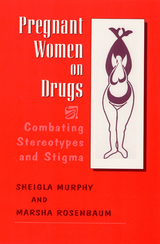 Pregnant Women on Drugs: Combating Stereotypes and Stigma
Rosenbaum, Marsha
Rutgers University Press, 1998 From Library Journal
Sociologists Murphy and Rosenbaum interviewed over 120 women who had children while using drugs. Their interviews reveal how the women became addicted, how they may or may not have modified their behavior to protect their children, and how they have dealt with having children and losing them as a result of their addiction. Not all the women interviewed were from abusive or poor families; there is extensive information on how the study population was selected. Also included are suggestions on how to deal with the problem, including women-centered drug treatment and training programs to help women learn trades as well as parenting skills. Though the interviews are enlightening, readers may wish for more answers to the question of how to deal with the root problem and less about the problems drug-addicted mothers face. For academic libraries, especially those with women's studies and sociology collections.?Danna C. Bell-Russel, Natl. Equal Justice Lib., Washington, DC
Review
A powerful refuation of the media-hype stereotypes of pregnant drug users as selfish and unfeeling, Pregnant Women on Drugs shows the extent to which many drug-using women develop the motivation to achieve their dual goals of improving their children's health and maintaining maternal custody. -- Steven R. Kandall, M.D., F.A.A.P., and author Substance and Shadow: Women and Addiction in the United States
Research-based but intensely personal. . . You will be touched by the poignant descriptions about the real lives of pregnant women on drugs. . . Pertinent reading for researchers, clinicians, and all Americans. -- Loretta P. Finnegan, M.D., researcher and perinatal addiction specialist
Touching and informative. . . Drug-addicted women who have either been ignored or reviled are finally given voice to tell their own stories. Their sad, true, and quintessentially human experiences provide persuasive arguments for compassion and supportive approaches to the problems of substance abuse and pregnancy. -- Lynn Paltrow, civil liberties and reproductive freedom attorney
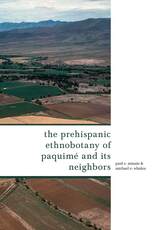 The Prehispanic Ethnobotany of Paquimé and Its Neighbors
Paul E. Minnis and Michael E. Whalen
University of Arizona Press, 2020 Paquimé (also known as Casas Grandes) and its antecedents are important and interesting parts of the prehispanic history in northwestern Mexico and the U.S. Southwest. Not only is there a long history of human occupation, but Paquimé is one of the better examples of centralized influence. Unfortunately, it is also an understudied region compared to the U.S. Southwest and other places in Mesoamerica.
This volume is the first large-scale investigation of the prehispanic ethnobotany of this important ancient site and its neighbors. The authors examine ethnobotanical relationships during Medio Period, AD 1200–1450, when Paquimé was at its most influential. Based on two decades of archaeological research, this book examines uses of plants for food, farming strategies, wood use, and anthropogenic ecology. The authors show that the relationships between plants and people are complex, interdependent, and reciprocal. This volume documents ethnobotanical relationships and shows their importance to the development of the Paquimé polity.
How ancient farmers made a living in an arid to semi-arid region and the effects their livelihood had on the local biota, their relations with plants, and their connection with other peoples is worthy of serious study. The story of the Casas Grandes tradition holds valuable lessons for humanity.
Pre-Hispanic Occupance in the Valley of Sonora, Mexico: Archaeological Confirmations of Early Spanish Reports
William E. Doolittle
University of Arizona Press, 1988 “[This book] presents a great amount of new information for a poorly known or understood area of northern Mexico, and provides a pleasant integration of the methods and theories of anthropology, geography, and ecology in a well-organized manner. . . . This report represents an important contribution to our understanding of cultural evolution and environmental adaptation in the Valley of Sonora and lays a strong framework for future studies and discussions.”—Journal of Arizona History
Prehispanic Settlement Patterns in the Upper Mantaro and Tarma Drainages, Junín, Peru: Volume 2, The Wanka Region
Edited by Jeffrey R. Parsons, Charles M. Hastings and Ramiro Matos M.
University of Michigan Press, 2000 This monograph is based on six months of systematic regional survey in the Wanka Region of Peru’s sierra central, carried out in two field seasons in 1975–1976 by the Junin Archaeological Research Project (JASP) under the co-direction of Jeffrey R. Parsons (University of Michigan) and Ramiro Matos Mendieta (Universidad Nacional Mayor de San Marcos).
Prehistoric America
Marquis de Nadaillac, with a new introduciton by Jon Muller
University of Alabama Press, 2005 A classic volume on the early study of American Indians.
With the settling of the New World, word spread throughout Europe of the native inhabitants, their artifacts, communities, and culturals. Prehistoric America by Marquis de Nadaillac is a prime example of a classic work of the period that addressed the antiquity of humans in the New World, drawing upon the full range of scientific data compiled on the inhabitants and their cultures. The proximity of human remains with those of extinct animals was still a very recent finding, even in the Old World. Nadaillac’s early attempts at cross-cultural comparison and theoretical explanations make this work valid despite the advances of modern-day scholarship. This work was originally published in French in 1883 and translated into English in 1884.
The Prehistoric Animal Ecology and Ethnozoology of the Upper Great Lakes Region
Charles Edward Cleland
University of Michigan Press, 1966 Charles Edward Cleland presents an analysis of the paleoecology and ethnozoology of the Upper Great Lakes from about 12,000 BC to AD 1700, with particular attention to faunal remains found at sites in Michigan and Wisconsin. The nine appendices were originally compiled as faunal reports for archaeological sites in the region.
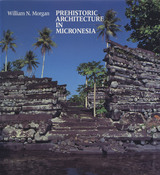 Prehistoric Architecture in Micronesia
William N. Morgan
University of Texas Press, 1988 In the many centuries preceding Western contact, a richly diverse and innovative architectural tradition reached maturity in the western Pacific. Prehistoric Architecture in Micronesia, the first modern study of this remarkable work, reveals that there is no such thing as primitive architecture but only primitive means. This study presents five distinctly different examples of Micronesia's ancient architecture. The sites include the extraordinary stone cities of Leluh and Nan Madol on the islands of Kosrae and Pohnpei, respectively. Other structures include the meeting houses and residences built on hexagonal stone platforms in the Yap Islands, the earth terraces and ornately decorated meeting houses of Palau, and the megalithic columns and capstones of prehistoric houses in the Mariana Islands. These structures are illustrated by photographs, maps, plans, and other drawings. Many of the basic data come from archaeological investigations of the specific sites. Summaries at the ends of chapters and in the concluding section compare the architectural characteristics of the island groups with each other and with monuments outside Micronesia. One of the most remarkable achievements of any ancient people, the prehistoric architecture of Micronesia is a source of continuing inspiration for persons who search for meaning in the built form of our present-day environment.
Prehistoric Biological Relationships in the Great Lakes Region
Richard Guy Wilkinson
University of Michigan Press, 1971 In this work, author Richard Guy Wilkinson presents an examination of the biological relationships among certain Middle and Late Woodland populations from the Great Lakes area. He studied the skeletal material from many Midwest archaeological sites, including Juntunen, Younge, Bussinger, Steuben, and Norton Mounds (the largest Hopewellian complex in Michigan). His research attempts to answer questions related to Illinois Hopewellian migration into Michigan; the relationship of Middle and Late Woodland populations in Illinois and the Great Lakes area; and the apparent causes of these relationships.
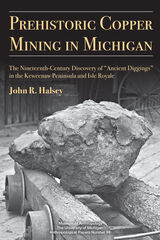 Prehistoric Copper Mining in Michigan: The Nineteenth-Century Discovery of “Ancient Diggings” in the Keweenaw Peninsula and Isle Royale
John R Halsey
University of Michigan Press, 2018 Isle Royale and the counties that line the northwest coast of Michigan's Upper Peninsula are called Copper Country because of the rich deposits of native copper there. In the nineteenth century, explorers and miners discovered evidence of prehistoric copper mining in this region. They used those "ancient diggings" as a guide to establishing their own, much larger mines, and in the process, destroyed the archaeological record left by the prehistoric miners. Using mining reports, newspaper accounts, personal letters, and other sources, this book reconstructs what these nineteenth-century discoverers found, how they interpreted the material remains of prehistoric activity, and what they did with the stone, wood, and copper tools they found at the prehistoric sites. "This volume represents an exhaustive compilation of the early written and published accounts of mines and mining in Michigan's Upper Peninsula. It will prove a valuable resource to current and future scholars. Through these early historic accounts of prospectors and miners, Halsey provides a vivid picture of what once could be seen." —John M. O'Shea, curator of Great Lakes Archaeology, University of Michigan Museum of Anthropological Archaeology
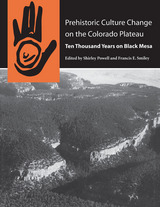 Prehistoric Culture Change on the Colorado Plateau: Ten Thousand Years on Black Mesa
Edited by Shirley Powell and Francis E. Smiley
University of Arizona Press, 2002 One of the largest archaeological projects ever undertaken in North America, Peabody Coal Company's Black Mesa Archaeological Project conducted investigations in northeastern Arizona from 1967 to 1983. This mammoth undertaking recognized and recovered the remains of ephemeral camps, early agricultural sites, Puebloan villages, and Navajo settlements stretching over nearly ten millennia of human occupation.
Now a single comprehensive work summarizes the results of this intensive survey, excavation, and analysis. Prehistoric Culture Change on the Colorado Plateau offers the only complete synthesis of Kayenta-area archaeology as well as the single most intensive study of the ancestral Puebloan and Navajo occupation of the Four Corners region. It also provides the human context for more than two decades of theoretical, methodological, and empirical work.
The authors—all associated with the Black Mesa project—synthesize previous analyses of faunal, lithic, ceramic, chronometric, and human osteological data, weaving a coherent and compelling story of the prehistory and ethnohistory of northern Arizona. Through these data, they provide a summary of culture history which emphasizes that organizational variation and other aspects of culture change are largely a response to a changing natural environment.
The volume provides a systematic overview of human occupation on and around Black Mesa through time, beginning with the Paleoindian period, moving through the Archaic and Basketmaker periods, considering the Puebloan dispersion and the magnificent remains of the Pueblo III period, and culminating with Hopi and Navajo perspectives on their history. The authors examine relationships among population density, subsistence strategies, and social organization, and use these data to identify the regional context within which the Black Mesa people may have operated during different time periods.
Broad in scope with a wealth of supporting detail, Prehistoric Culture Change on the Colorado Plateau offers a basic reference on this important project that collects twenty years of analysis into one volume. It is a unique touchstone in Southwest archaeology that will stand as the last word on Black Mesa.
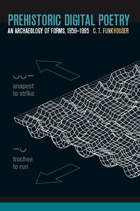 Prehistoric Digital Poetry: An Archaeology of Forms, 1959-1995
C.T. Funkhouser, with a foreword by Sandy Baldwin
University of Alabama Press, 2007 Explores pioneering works of digital poetry and demonstrates how technological constraints that would seemingly limit the aesthetics of poetry have instead extended and enriched poetic discourse
For the last five decades, poets have had a vibrant relationship with computers and digital technology. This book is a documentary study and analytic history of digital poetry that highlights its major practitioners and the ways that they have used technology to foster a new aesthetic. Focusing primarily on programs and experiments produced before the emergence of the World Wide Web in the mid-1990s, C. T. Funkhouser analyzes numerous landmark works of digital poetry to illustrate that the foundations of today’s most advanced works are rooted in the rudimentary generative, visual, and interlinked productions of the genre’s prehistoric period.
Since 1959, computers have been used to produce several types of poetic output, including randomly generated writings, graphical works (static, animated, and video formats), and hypertext and hypermedia. Funkhouser demonstrates how hardware, programming, and software have been used to compose a range of new digital poetic forms. Several dozen historical examples, drawn from all of the predominant approaches to digital poetry, are discussed, highlighting the transformational and multi-faceted aspects of poetic composition now available to authors. This account
includes many works, in English and other languages, which have never before been presented in an English-language publication.
In exploring pioneering works of digital poetry, Funkhouser demonstrates how technological constraints that would seemingly limit the aesthetics of poetry have instead extended and enriched poetic discourse. As a history of early digital poetry and a record of an era that has passed, this study aspires both to influence poets working today and to highlight what the future of digital poetry may hold.
Prehistoric Food Production in North America
Edited by Richard I. Ford
University of Michigan Press, 1985 As Richard I. Ford explains in his preface to this volume, the 1980s saw an “explosive expansion of our knowledge about the variety of cultivated and domesticated plants and their history in aboriginal America.” This collection presents research on prehistoric food production from Ford, Patty Jo Watson, Frances B. King, C. Wesley Cowan, Paul E. Minnis, and others.
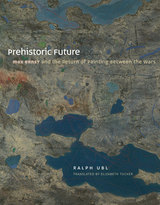 Prehistoric Future: Max Ernst and the Return of Painting between the Wars
Ralph Ubl
University of Chicago Press, 2013 One of the most admired artists of the twentieth century, Max Ernst was a proponent of Dada and founder of surrealism, known for his strange, evocative paintings and drawings. In Prehistoric Future, Ralph Ubl approaches Ernst like no one else has, using theories of the unconscious—surrealist automatism, Freudian psychoanalysis, the concept of history as trauma—to examine how Ernst’s construction of collage departs from other modern artists. Ubl shows that while Picasso, Braque, and Man Ray used scissors and glue to create collages, Ernst employed techniques he himself had forged—rubbing and scraping to bring images forth onto a sheet of paper or canvas to simulate how a screen image or memory comes into the mind’s view. In addition, Ernst scoured the past for obsolete scientific illustrations and odd advertisements to illustrate the rapidity with which time passes and to simulate the apprehension generated when rapid flows of knowledge turn living culture into artifact. Ultimately, Ubl reveals, Ernst was interested in the construction and phenomenology of both collective and individual modern history and memory. Shedding new light on Ernst’s working methods and the reasons that his pieces continue to imprint themselves in viewers’ memories, Prehistoric Future is an innovative work of critical writing on a key figure of surrealism.
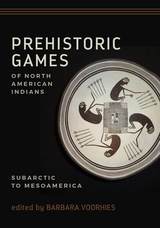 Prehistoric Games of North American Indians: Subarctic to Mesoamerica
Barbara Voorhies
University of Utah Press, 2017 Prehistoric Games of North American Indians is a collection of studies on the ancient games of indigenous peoples of North America. The authors, all archaeologists, muster evidence from artifacts, archaeological features, ethnography, ethnohistory, and to a lesser extent linguistics and folklore. Chapters sometimes center on a particular game (chunkey rolling disc game or patolli dice game, for example) or sometimes on a specific prehistoric society and its games (Aztec acrobatic games, games of the ancient Fremont people), and in one instance on the relationship between slavery and gaming in ancient indigenous North American societies. In addition to the intrinsic value of pursuing the time depth of these games, some of which remain popular and culturally important today among Native Americans or within the broader society, the book is important for demonstrating a wide variety of research methods and for problematizing a heretofore overlooked research topic. Issues that emerge include the apparently ubiquitous but difficult to detect presence of gambling, the entanglement of indigenous games and the social logic of the societies in which they are embedded, the characteristics of women’s versus men’s games or those of in-group and out-group gaming, and the close correspondence between gaming and religion. The book’s coverage is broad and balanced in terms of geography, level of socio-cultural organization and gender.
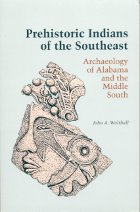 Prehistoric Indians of the Southeast: Archaeology of Alabama and the Middle South
John A. Walthall
University of Alabama Press, 1990 This book deals with the prehistory of the region encompassed by the present state of Alabama and spans a period of some 11,000 years—from 9000 B.C. and the earliest documented appearance of human beings in the area to A.D. 1750, when the early European settlements were well established. Only within the last five decades have remains of these prehistoric peoples been scientifically investigated.
This volume is the product of intensive archaeological investigations in Alabama by scores of amateur and professional researchers. It represents no end product but rather is an initial step in our ongoing study of Alabama's prehistoric past. The extent of current industrial development and highway construction within Alabama and the damming of more and more rivers and streams underscore the necessity that an unprecedented effort be made to preserve the traces of prehistoric human beings that are destroyed every day by our own progress.
 Prehistoric Life
Percy E. Raymond
Harvard University Press The history of life through the five or six hundred million years of which fossils afford a record and before man appeared on the scene is recounted in this fascinating volume, which avoids, as far as possible, technical terms not commonly employed by the average reader. Professor Raymond traces the main lines from the invertebrates of the early Paleozoic through transition forms, partly invertebrate and partly vertebrate, in the Mid-Paleozoic, to the primitive amphibians and reptiles of the late Paleozoic and thence along to the rise of simple sorts of mammals in the early Mesozoic and in the Cenozoic. He also discusses organisms not in the main lines, such as the insects, which have followed paths that may ultimately lead to the control of the earth, and others, like the mighty dinosaurs, that have followed the route to extinction. He points out that all animals and plants are in a sense products of their environment and that all organisms that have ever lived have had their influence upon those now living. The tremendous story is told with the ease and mastery that mark the true expert, but it is also told with a charm not often found in scientific writing.
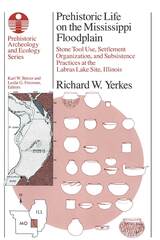 Prehistoric Life on the Mississippi Floodplain: Stone Tool Use, Settlement Organization, and Subsistence Practices at the Labras Lake Site, Illinois
Richard W. Yerkes
University of Chicago Press, 1987 At the confluence of the Illinois, the Missouri, and the Mississippi Rivers lies the "American Bottom," a broad floodplain that prehistoric peoples inhabited for millennia. Precisely how did they live? What were their ties to the natural world around them? In this study, based upon some six years of intensive archeological and geological research at Labras Lake in St. Clair County, Illinois, Richard W. Yerkes interprets a wealth of important new data in a stimulating and original fashion.
With a fine-tuned control of the data, Yerkes challenges prevailing theories based on simple classifications of stone tools according to shape or on simple models of diffuse and focal economies. He views environment as a dynamic factor in economic and cultural life, rather than as merely a backdrop to it. Using incident light microscopy, he examines wear patterns on stone tools to determine what activities were performed during each period the site was inhabited—the Late Archaic, the Late Woodland, and the Mississippian. As he documents environmental change at Labras Lake, he analyzes plant and animal remains in context to explore diet and seasonal patterns of subsistence and settlement.
The result is a more accurate and detailed picture than ever before what prehistoric life on the Mississippi floodplain was like. Yerkes shows how to assess the duration and size of occupations and how to determine where and when true permanent settlements arose. What others call "sedentary encampments" he reveals as sequences of small residental occupations for a narrow range of activities during shorter, seasonal periods. His contribution to the study of the development of sedentism is potentially far-reaching and will interest many North American anthropologists and archeologists.
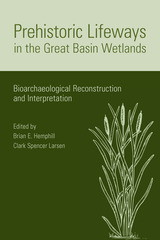 Prehistoric Lifeways in the Great Basin Wetlands: Bioarchaelogical Reconstruction and Interpretation
Brian Hemphill
University of Utah Press, 1999 Prehistoric Lifeways of the Great Basin Wetlands examines how the earliest inhabitants of the Great basin in Nevada, Utah, and Oregon made use of ancient marshes and lakes.
When the Great Salt Lake receded in the 1980s from its highest historically recorded levels, it exposed a large number of archaeological and burial sites. Other wetland areas in the region experienced similar flooding and site exposure. The resulting archaeological bonanza resolved long-standing controversy over the role of wetlands in prehistoric Great Basin human subsistence. Previously, archaeologists argued two disparate views: either wetlands offered a wealth of resources and served as a magnet for human occupation and rather sedentary lifestyles, or wetlands provided only meager fare that was insufficient to promote increased sedentism. The exposure of human remains coincided with improved analytic techniques, enabling new conclusions about diet, behavior, and genetic affiliation.
This volume presents findings from three Great Basin wetland areas: Great Salt Lake, Stillwater Marsh (Nevada) and Malheur Lake (Oregon). The evidence presented here does not indicate the superiority of one interpretation over another but offers a more complex picture of variable adaptation, high mobility, and generally robust health among peoples living in a harsh setting with heavy physical demands. It is the first volume to draw together new approaches to the study of earlier human societies, including analysis of mtDNA for population reconstruction and cross-sectional geometric assessment of long bones for behavior interpretation.
Prehistoric Lowland Maya Environment and Subsistence Economy
Mary Pohl
Harvard University Press, 1985 With contributions by Paul Bloom, Helen Sorayya Carr, Edward S. Deevey, Jr., Nancy L. Hamblin, S. E. Garrett-Jones, Hattula Moholy-Nagy, Mary Pohl, Amadeo M. Rea, Don S. Rice, Prudence M. Rice, Julie Stein, B. L. Turner II, Hague H. Vaughan, Richard R. Wilk, Frederick Matthew Wiseman
This volume provides data from interdisciplinary projects produced over the past fifteen years, including palynology, limnology, geography, soil science, faunal analysis, ethnology, and ethnohistory. Centering on differences of opinion rather than on a synthesis of data, this analysis of the methods and theoretical principles by which specialists work yields a unique view of archaeological procedures.
The Prehistoric People of the Fort Ancient Culture of the Central Ohio Valley
Louise M. Robbins and Georg K. Neumann
University of Michigan Press, 1972 Louise M. Robbins analyzes prehistoric human remains from sites in the central Ohio Valley. She organizes them into five groups and describes the varieties. She also sorts the remains by culture (Baum, Feurt, Anderson, Madisonville). Extensive appendices on metrical and morphological terminology, data, descriptions, drawings, and more.
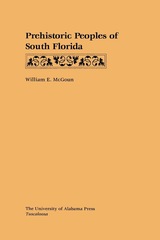 Prehistoric Peoples of South Florida
William E. McGoun
University of Alabama Press, 1993 To many people in South Florida, and "oldtimer" is someone who has lived there for more than five years. Prehistoric Peoples of South Florida considers the culture history of the real South Florida "oldtimers" dating from 10,000 B.C. through the invasion by Europeans and analyzes the ways in which they adapted to their environment through time—or caused their environment to adapt to them.
South Florida is a biological island, its plant communities circumscribed by the southern limits of frost. Its peoples were distinct from those to the north and were less studied by scholars. In recent years the pace of research has increased, but there has been no attempt at synthesis since John M. Goggin wrote his still-unpublished manuscript on the Glades nearly half a century ago. Prehistoric Peoples of South Florida assembles the available knowledge and discusses competing theories, and does so in terms that are understandable to the general reader. McGoun outlines a cultural system that maintained an impressive continuity for 10,000 years—before being destroyed by two centuries of European contact.
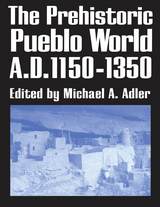 The Prehistoric Pueblo World, A.D. 1150-1350
Edited by Michael A. Adler
University of Arizona Press, 1996 From the mid-twelfth to the mid-fourteenth century, the world of the ancestral Pueblo people (Anasazi) was in transition, undergoing changes in settlement patterns and community organization that resulted in what scholars now call the Pueblo III period. This book synthesizes the archaeology of the ancestral Pueblo world during the Pueblo III period, examining twelve regions that embrace nearly the entire range of major topographic features, ecological zones, and prehistoric Puebloan settlement patterns found in the northern Southwest. Drawn from the 1990 Crow Canyon Archaeological Center conference "Pueblo Cultures in Transition," the book serves as both a data resource and a summary of ideas about prehistoric changes in Puebloan settlement and in regional interaction across nearly 150,000 square miles of the Southwest. The volume provides a compilation of settlement data for over 800 large sites occupied between A.D. 1100-1400 in the Southwest. These data provide new perspectives on the geographic scale of culture change in the Southwest during this period. Twelve chapters analyze the archaeological record for specific districts and provide a detailed picture of settlement size and distribution, community architecture, and population trends during the period. Additional chapters cover warfare and carrying capacity and provide overviews of change in the region. Throughout the chapters, the contributors address the unifying issues of the role of large sites in relation to smaller ones, changes in settlement patterns from the Pueblo II to Pueblo III periods, changes in community organization, and population dynamics. Although other books have considered various regions or the entire prehistoric area, this is the first to provide such a wealth of information on the Pueblo III period and such detailed district-by-district syntheses. By dealing with issues of population aggregation and the archaeology of large settlements, it offers readers a much-needed synthesis of one of the most crucial periods of culture change in the Southwest. Contents
1. "The Great Period": The Pueblo World During the Pueblo III Period, A.D. 1150 to 1350, Michael A. Adler
2. Pueblo II-Pueblo III Change in Southwestern Utah, the Arizona Strip, and Southern Nevada, Margaret M. Lyneis
3. Kayenta Anasazi Settlement Transformations in Northeastern Arizona: A.D. 1150 to 1350, Jeffrey S. Dean
4. The Pueblo III-Pueblo IV Transition in the Hopi Area, Arizona, E. Charles Adams
5. The Pueblo III Period along the Mogollon Rim: The Honanki, Elden, and Turkey Hill Phases of the Sinagua, Peter J. Pilles, Jr.
6. A Demographic Overview of the Late Pueblo III Period in the Mountains of East-central Arizona, J. Jefferson Reid, John R. Welch, Barbara K. Montgomery, and María Nieves Zedeño
7. Southwestern Colorado and Southeastern Utah Settlement Patterns: A.D. 1100 to 1300, Mark D. Varien, William D. Lipe, Michael A. Adler, Ian M. Thompson, and Bruce A. Bradley
8. Looking beyond Chaco: The San Juan Basin and Its Peripheries, John R. Stein and Andrew P. Fowler
9. The Cibola Region in the Post-Chacoan Era, Keith W. Kintigh
10. The Pueblo III Period in the Eastern San Juan Basin and Acoma-Laguna Areas, John R. Roney
11. Southwestern New Mexico and Southeastern Arizona, A.D. 900 to 1300, Stephen H. Lekson
12. Impressions of Pueblo III Settlement Trends among the Rio Abajo and Eastern Border Pueblos, Katherine A. Spielman
13. Pueblo Cultures in Transition: The Northern Rio Grande, Patricia L. Crown, Janet D. Orcutt, and Timothy A. Kohler
14. The Role of Warfare in the Pueblo III Period, Jonathan Haas and Winifred Creamer
15. Agricultural Potential and Carrying Capacity in Southwestern Colorado, A.D. 901 to 1300, Carla R. Van West
16. Big Sites, Big Questions: Pueblos in Transition, Linda S. Cordell
17. Pueblo III People and Polity in Relational Context, David R. Wilcox
Appendix: Mapping the Puebloa
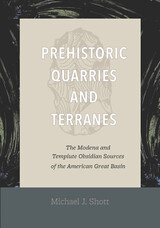 Prehistoric Quarries and Terranes: The Modena and Tempiute Obsidian Sources
Michael J. Shott
University of Utah Press, 2021 Because of the sheer volume of industrial debris and the limited information it yields, quarries are challenging archaeological subjects. Michael J. Shott tackles this challenge in a study of flakes and preforms from the Modena and Tempiute obsidian quarries of North America’s Great Basin. Using new statistical methods combined with experimental controls and mass analysis, Shott extracts detailed information from debris assemblages, and parses them by successive “stages” of reduction continua. The book also reports the first test of the behavioral ecology field-processing model that treats quarry biface production in continuous terms, and estimates the production efficiency of prehistoric Great Basin knappers. After mapping and interpreting the abundance and distribution of quarry products, Shott concludes by charting future lines of research in the analysis of large toolstone sources. Whatever area of the world and technological traditions they research, lithic analysts will learn much from this book’s approach to complex archaeological deposits and their constituent artifacts.
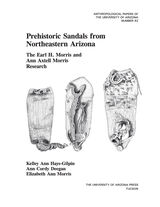 Prehistoric Sandals from Northeastern Arizona: The Earl H. Morris and Ann Axtell Morris Research
Kelley Ann Hays-Gilpin, Ann Cordy Deegan, and Elizabeth Ann Morris
University of Arizona Press, 1998 During the late 1920s and early 1930s, archaeologists Earl and Ann Axtell Morris discovered an abundance of sandals from the Basketmaker II and III through Pueblo III periods while excavating rockshelters in northeastern Arizona. These densely twined sandals made of yucca yarn were intricately crafted and elaborately decorated, and Earl Morris spent the next 25 years overseeing their analysis, description, and illustration. This is the first full published report on this unusual find, which remains one of the largest collections of sandals in Southwestern archaeology. This monograph offers an integrated archaeological and technical study of the footwear, providing for the first time a full-scale analysis of the complicated weave structures they represent. Following an account by anthropologist Elizabeth Ann Morris of her parents' research, textile authority Ann Cordy Deegan gives an overview of prehistoric Puebloan sandal types and of twined sandal construction techniques, revealing the subtleties distinguishing Basketmaker sandals of different time periods. Anthropologist Kelley Ann Hays-Gilpin then discusses the decoration of twined sandals and speculates on the purpose of such embellishment.
A Prehistoric Sequence in the Middle Pecos Valley, New Mexico
Arthur J. Jelinek
University of Michigan Press, 1967 Arthur J. Jelinek describes the results of his archaeological surveys and excavations in east central New Mexico and provides a prehistoric cultural sequence of the Middle Pecos Valley, from the Paleoindian period to the Late McKenzie Phase. With a contribution on pollen analysis by Paul S. Martin.
Prehistoric Settlement Patterns in the Texcoco Region, Mexico
Jeffrey R. Parsons
University of Michigan Press, 1971 In this volume, archaeologist Jeffrey R. Parsons presents research based on an extensive 1967 survey of the Texcoco Region in the Valley of Mexico. The sites are organized by time period, from Middle Formative to Aztec. Parsons describes the sites in detail and compares them to those of the same time periods in the Teotihuacan Valley and the Valley of Mexico in general.
Prehistoric Social, Political, and Economic Development in the Area of the Tehuacan Valley: Some Results of the Palo Blanco Project
Edited by Robert D. Drennan
University of Michigan Press, 1979 In this volume, editor Robert D. Drennan presents a series of reports on archaeological research in the Tehuacán Valley of Mexico. Charles S. Spencer writes about irrigation in the Formative period; Elsa M. Redmond reports on a Terminal Formative ceramic workshop; John R. Alden writes about a survey at Quachilco; Drennan provides a preliminary report on excavations at Cuayucatepec; Spencer and Redmond report on Formative and Classic developments in the Cuicatlan Cañada; and Judith E. Smith provides an analysis of carbonized botanical remains from Quachilco, Cuayucatepec, and La Coyotera.
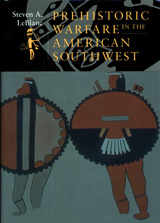 Prehistoric Warfare in the American Southwest
Steven A LeBlanc
University of Utah Press, 2007 Massacres, raiding parties, ambush, pillage, scalping, captive taking: the things we know and sometimes dread to admit occur during times of war all happened in the prehistoric Southwest—and there is ample archaeological evidence. Not only did it occur, but the history of the ancient Southwest cannot be understood without noting the intensity and impact of this warfare. Most people today, including many archaeologists, view the Pueblo people of the Southwest as historically peaceful, sedentary corn farmers. Our image of the Hopis and Zunis, for example, contrasts sharply with the more nomadic Apaches whose warfare and raiding abilities are legendary. In Prehistoric Warfare in the American Southwest Steven LeBlanc demonstrates that this picture of the ancient Puebloans is highly romanticized. Taking a pan-Southwestern view of the entire prehistoric and early historic time range and considering archaeological and ethnohistorical evidence and oral traditions, he presents a different picture. War, not peace, was commonplace and deadly throughout the prehistoric sequence. Many sites were built as fortresses, communities were destroyed, and populations massacred. The well-known abandonments of much of the Southwest were warfare related. During the late prehistoric period fighting was particularly intense, and the structure of the historic pueblo societies was heavily influenced by warfare. Objectively sought, evidence for war and its consequences is abundant. The people of the region fought for their survival and evolved their societies to meet the demands of conflict. Ultimately, LeBlanc asserts that the warfare can be understood in terms of climate change, population growth, and their consequences.
Prehistory and Human Ecology of the Deh Luran Plain: An Early Village Sequence from Khuzistan, Iran
Frank Hole, Kent V. Flannery, and James A. Neely
University of Michigan Press, 1969 In the early 1960s, archaeologists Frank Hole, Kent V. Flannery, and James A. Neely surveyed the prehistoric mounds in Deh Luran and then excavated at two sites: Ali Kosh and Tepe Sabz. The researchers found evidence that the sites dated to between 7500 and 3500 BC, during which time the residents domesticated plants and animals. This volume, published in 1969, was the first in the Museum’s Memoir series—designed for data-rich, heavily illustrated archaeological monographs.
Prehistory Of Carson Desert and Stillwater: Anthropological Paper 123
Robert Kelly
University of Utah Press, 2001 University of Utah Anthropological Paper No. 123
This study examines prehistoric use of the Stillwater Marsh in the Carson Desert of western Nevada and the adjacent Stillwater Mountains based on an archaeological survey undertaken in 1980 and 1981, and excavations conducted in 1987. Much of the argument about the use of wetlands revolved around whether they were used be sedentary hunter-gatherers, were just one stop of a family’s seasonal round, or were used only as backup resources. As a result, this report focuses on the issues of hunter-gatherer subsistence and mobility.
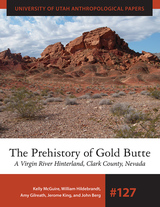 The Prehistory of Gold Butte: A Virgin River Hinterland, Clark County, Nevada
Kelly R McGuire
University of Utah Press, 2014 University of Utah Anthropological Paper No. 127
The Prehistory of Gold Butte uses a theoretical perspective rooted in human behavior ecology and other foraging models to present the results of one of the largest and most comprehensive archaeological investigations ever undertaken in southern Nevada, involving the systematic survey of more than 31,000 acres, the documentation of more than 377 sites, and the excavation of nine prehistoric sites. Gold Butte—at the crossroads of the Mojave Desert, the Great Basin, and the Colorado Plateau in southern Nevada—has a 12,000-year record of human occupation with archaeological elements that can be traced to all three culture zones.
Dramatic developments occurred in this area of the Desert West. Farmers suddenly appeared in the Virgin River basin about 1,600 years ago. At such iconic sites as Lost City, Main Ridge, and Mesa House, full village and agricultural life developed over the span of a few hundred years only to completely vanish by AD 1250 after a series of droughts and other cultural disruptions. The Patayan held sway for several hundred years, between AD 1100 and 1500, but didn’t advance much beyond the Colorado River corridor. Finally, the Southern Paiute arrived and occupied not only the Virgin River basin and Gold Butte but much of the northwestern quadrant of the Southwest from at least the time of historic contact (AD 1500) to the present.
This mix of cultures illustrates historical contingency, inplace development, and external relationships that should be expected along a boundary area such as Gold Butte. By looking at hinterlands adjoining the prehistoric settlements that clustered along the Virgin River corridor before, during, and after the Puebloan period, the authors suggest that changes in settlement- subsistence and lifeways at core settlements along the riverine corridor have corresponding effects on the character and intensity of hinterland occupation.
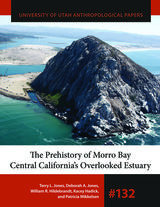 The Prehistory of Morro Bay: Central California's Overlooked Estuary
Edited by Terry L. Jones, Deborah A. Jones, William R. Hildebrandt, Kacey Hadick, and Patricia Mikkelsen
University of Utah Press, 2019 Morro Bay is one of more than thirty major estuaries where prehistoric people thrived along the California coast, yet for much of the twentieth century these systems were deemed insignificant within the broader outline of New World prehistory. Recent research, however, has shown that estuaries were magnets for human occupation as early as 10,000 years ago. This book combines archaeological data from large-scale excavations completed between 2003 and 2014 with other studies from Morro Bay to reveal a heretofore overlooked yet remarkable history of cultural change and adaptation. Over the last 8,000 years, as the bay evolved toward its current configuration, inhabitants endured earthquake and drought, regularly adjusting their settlement practices but continuing to fish and collect shellfish. Their populations slowly grew against a backdrop of extreme resource diversity and diachronic habitat variation, ultimately leaving behind evidence of a unique human-estuary ecological saga.
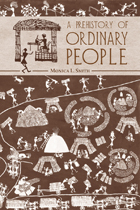 A Prehistory of Ordinary People
Monica L. Smith
University of Arizona Press, 2010 For the past million years, individuals have engaged in multitasking as they interact with the surrounding environment and with each other for the acquisition of daily necessities such as food and goods. Although culture is often perceived as a collective process, it is individual people who use language, experience illness, expend energy, perceive landscapes, and create memories. These processes were sustained at the individual and household level from the time of the earliest social groups to the beginnings of settled agricultural communities and the eventual development of complex societies in the form of chiefdoms, states, and empires.
Even after the advent of “civilization” about 6,000 years ago, human culture has for the most part been created and maintained not by the actions of elites—as is commonly proclaimed by many archaeological theorists—but by the many thousands of daily actions carried out by average citizens.
With this book, Monica L. Smith examines how the archaeological record of ordinary objects—used by ordinary people—constitutes a manifestation of humankind’s cognitive and social development. A Prehistory of Ordinary People offers an impressive synthesis and accessible style that will appeal to archaeologists, cultural anthropologists, and others interested in the long history of human decision-making.
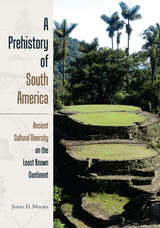 A Prehistory of South America: Ancient Cultural Diversity on the Least Known Continent
Jerry D. Moore
University Press of Colorado, 2014 A Prehistory of South America is an overview of the ancient and historic native cultures of the entire continent of South America based on the most recent archaeological investigations. This accessible, clearly written text is designed to engage undergraduate and beginning graduate students in anthropology.
For more than 12,000 years, South American cultures ranged from mobile hunters and gatherers to rulers and residents of colossal cities. In the process, native South American societies made advancements in agriculture and economic systems and created great works of art—in pottery, textiles, precious metals, and stone—that still awe the modern eye. Organized in broad chronological periods, A Prehistory of South America explores these diverse human achievements, emphasizing the many adaptations of peoples from a continent-wide perspective. Moore examines the archaeologies of societies across South America, from the arid deserts of the Pacific coast and the frigid Andean highlands to the humid lowlands of the Amazon Basin and the fjords of Patagonia and beyond.
Illustrated in full color and suitable for an educated general reader interested in the Precolumbian peoples of South America, A Prehistory of South America is a long overdue addition to the literature on South American archaeology.
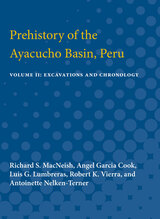 Prehistory of the Ayacucho Basin, Peru: Volume II: Excavations and Chronology
Richard S. MacNeish, Angel Garcia Cook, Luis G. Lumbreras, Robert K. Vierra, and Antoinette Nelken-Terner
University of Michigan Press, 1982 Excavations and Chronology is the second of a series of major publications devoted to the archaeology of South America. Richard S. MacNeish has assembled an excellent staff of cooperating scientists for the excavation and interdisciplinary analysis of the Ayacucho Basin, a pristine nuclear site and a region containing the major archaeological, geographical, and ecological units of highland Peru. Supported by the National Science Foundation, MacNeish and his colleagues, in addition to their excavation, collected historical and prehistoric specimens and records documenting the geological, botanical, zoological, and other aspects of the Basin from the past 25,000 years. Future volumes will provide discussions on changes in the prehistorical environment, changes in ceramics and architecture, statistical-computer techniques used in determining ancient human behavior and reconstructing ancient cultural systems and subsystems, and changes in population and settlement patterns and energy flow.
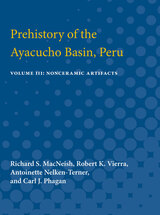 Prehistory of the Ayacucho Basin, Peru: Volume III: Nonceramic Artifacts
Richard S. MacNeish, Angel Garcia Cook, Luis G. Lumbreras, Robert K. Vierra, and Antoinette Nelken-Terner
University of Michigan Press, 1980 Nonceramic Artifacts is the first of a series of major publications devoted to the archaeology of South America. Richard S. MacNeish has assembled an excellent staff of cooperating scientists for the excavation and interdisciplinary analysis of the Ayacucho Basin, a pristine nuclear site and a region containing the major archaeological, geographical, and ecological units of highland Peru. Supported by the National Science Foundation, MacNeish and his colleagues, in addition to their excavation, collected historical and prehistoric specimens and records documenting the geological, botanical, zoological, and other aspects of the Basin from the past 25,000 years. Future volumes will provide discussions on changes in the prehistorical environment, excavation techniques and methodology for establishing chronology, changes in ceramics and architecture, statistical-computer techniques used in determining ancient human behavior and reconstructing ancient cultural systems and subsystems, and changes in population and settlement patterns and energy flow.
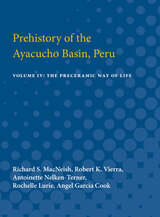 Prehistory of the Ayacucho Basin, Peru: Volume IV: The Preceramic Way of Life
Richard S. MacNeish, Angel Garcia Cook, Luis G. Lumbreras, Robert K. Vierra, and Antoinette Nelken-Terner
University of Michigan Press, 1983 The Preceramic Way of Life is the third of a series of major publications devoted to the archaeology of South America. Richard S. MacNeish has assembled an excellent staff of cooperating scientists for the excavation and interdisciplinary analysis of the Ayacucho Basin, a pristine nuclear site and a region containing the major archaeological, geographical, and ecological units of highland Peru. Supported by the National Science Foundation, MacNeish and his colleagues, in addition to their excavation, collected historical and prehistoric specimens and records documenting the geological, botanical, zoological, and other aspects of the Basin from the past 25,000 years. A future volume will provide discussion on changes in the prehistorical environment, statistical-computer techniques used in determining ancient human behavior and reconstructing ancient cultural systems and subsystems, and changes in population and settlement patterns.
The Prehistory of the Burnt Bluff Area
Edited by James E. Fitting
University of Michigan Press, 1968 The Burnt Bluff area is an archaeological site in Delta County in Michigan’s Upper Peninsula. There are hundreds of caves and rock paintings along the cliffs on the southern end of the Garden Peninsula, which reaches southwest into Lake Michigan from the mainland. This report describes the results of archaeological research there in 1963 and 1965. Contributions by James E. Fitting, Charles E. Cleland, G. Richard Peske, Donald E. Janzen, Earl J. Prahl, W. R. Farrand, Douglas W. Lugthart, and Volney H. Jones.
Prehistory of the Central Mississippi Valley
Edited by Charles H. McNutt
University of Alabama Press, 1996 The Central Mississippi Valley, defined as the region along the Mississippi River from where the Ohio River joins in the north to its confluence with the Arkansas River in the south, lies between the two most important archaeological areas of the Southeast: American Bottom/Cahokia and the Lower Yazoo Basin. The valley has been influenced by these major centers and has a complex history of its own. Contributions from experts throughout the region present current, if sometimes conflicting, views of the regional cultural sequences supported by data from recent surveys and excavations, as well as radiocarbon and chronometric determinations. By examining this new information and reevaluating earlier interpretations of local archaeological sequences, this volume provides a comprehensive overview of the valley and defines future research goals.
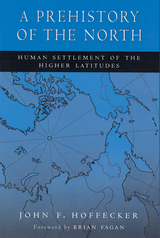 A Prehistory of the North: Human Settlement of the Higher Latitudes
Hoffecker, John F
Rutgers University Press, 2004 Early humans did not simply drift northward from their African origins as their abilities to cope with cooler climates evolved. The initial settlement of places like Europe and northern Asia, as well as the later movement into the Arctic and the Americas, actually occurred in relatively rapid bursts of expansion. A Prehistory of the North is the first full-length study to tell the complex story, spanning almost two million years, of how humans inhabited some of the coldest places on earth. In an account rich with illustrations, John Hoffecker traces the history of anatomical adaptations, diet modifications, and technological developments, such as clothing and shelter, which allowed humans the continued ability to push the boundaries of their habitation. The book concludes by showing how in the last few thousand years, peoples living in the circumpolar zone—with the exception of western and central Siberia—developed a thriving maritime economy. Written in nontechnical language, A Prehistory of the North provides compelling new insights and valuable information for professionals and students.
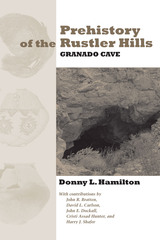 Prehistory of the Rustler Hills: Granado Cave
By Donny L. Hamilton
University of Texas Press, 2001 The Northeastern Trans-Pecos region of Texas is an unforgiving environment for anyone living off the land, yet nomadic hunters and gatherers roamed its deserts and mountains and sheltered in caves and sinkholes from around AD 200 to 1450. This book provides detailed insights into the lifeways of these little-known prehistoric peoples. It places their occupation of the region in a wider temporal and cultural framework through a comprehensive description and analysis of the archaeological remains excavated by Donny L. Hamilton at Granado Cave in 1978. Hamilton begins with a brief overview of the geology and environment of the Granado Cave area and reviews previous archaeological investigations. Then he and other researchers present detailed analyses of the burials and other material remains found in the cave, as well as the results of radiocarbon dating. From these findings, he reconstructs the subsistence patterns and burial practices of these Native Americans, whom he identifies as a distinct group that was pushed into the environment by surrounding peoples. He proposes that they should be represented by a new archaeological phase, thus helping to clarify the poorly understood late prehistory of the Trans-Pecos.
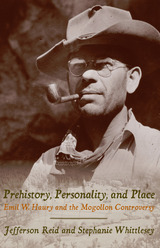 Prehistory, Personality, and Place: Emil W. Haury and the Mogollon Controversy
Jefferson Reid and Stephanie Whittlesey
University of Arizona Press, 2011 When Emil Haury defined the ancient Mogollon in the 1930s as a culture distinct from their Ancestral Pueblo and Hohokam neighbors, he triggered a major intellectual controversy in the history of southwestern archaeology, centering on whether the Mogollon were truly a different culture or merely a “backwoods variant” of a better-known people. In this book, archaeologists Jefferson Reid and Stephanie Whittlesey tell the story of the remarkable individuals who discovered the Mogollon culture, fought to validate it, and eventually resolved the controversy.
Reid and Whittlesey present the arguments and actions surrounding the Mogollon discovery, definition, and debate. Drawing on extensive interviews conducted with Haury before his death in 1992, they explore facets of the debate that scholars pursued at various times and places and how ultimately the New Archaeology shifted attention from the research questions of cultural affiliation and antiquity that had been at the heart of the controversy. In gathering the facts and anecdotes surrounding the debate, Reid and Whittlesey offer a compelling picture of an academician who was committed to understanding the unwritten past, who believed wholeheartedly in the techniques of scientific archaeology, and who used his influence to assist scholarship rather than to advance his own career.
Prehistory, Personality, and Place depicts a real archaeologist practicing real archaeology, one that fashioned from potsherds and pit houses a true understanding of prehistoric peoples. But more than the chronicle of a controversy, it is a book about places and personalities: the role of place in shaping archaeologists’ intellect and personalities, as well as the unusual intersections of people and places that produced resolutions of some intractable problems in Southwest history.
Prejudice
Thomas F. Pettigrew, George M. Fredrickson, Dale T. Knobel, Nathan Glazer, and Reed Ueda
Harvard University Press, 1982 The monumental Harvard Encyclopedia of American Ethnic Groups is the most authoritative single source available on the history, culture, and distinctive characteristics of ethnic groups in the United States. The Dimensions of Ethnicity series is designed to make this landmark scholarship available to everyone in a series of handy paperbound student editions. Selections in this series will include outstanding articles that illuminate the social dynamics of a pluralistic nation or masterfully summarize the experience of key groups.
Written by the best-qualified scholars in each field, Dimensions of Ethnicity titles will reflect the complex interplay between assimilation and pluralism that is a central theme of the American experience.
In Prejudice, the history and psychology of discriminatory policies is contrasted with efforts to overcome discrimination.
Prejudice and Pride: LGBT Activist Stories from Manchester and Beyond
LGBT North West
Intellect Books, 2015 LGBT activist and civil rights history from the 1960s to the 2000s has had a huge impact on our social and political landscape in the UK, yet much of this history remains hidden. Prejudice and Pride: LGBT Activist Stories from Manchester and Beyond explores aspects of LGBT activist history. It covers educational activism, youth work activism, and the history of the LGBT Centre in Manchester. Through personal stories of activists, heard and recorded by young people from LGBT Youth North West, the book explores the "wibbly wobbly" nature of people's histories. It reveals how they interlink in surprising and creative ways to form the current landscape of both prejudice and pride. Also contains exercises for interpreting and ideas for collecting activist histories within youth work.
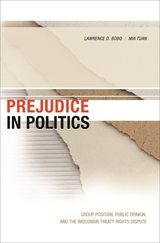 Prejudice in Politics: Group Position, Public Opinion, and the Wisconsin Treaty Rights Dispute
Lawrence D. Bobo and Mia Tuan
Harvard University Press, 2006 This book presents a sociological study of how and why racial prejudice against members of a minority group comes to shape what happens to important political claims and aspirations of the group. Lawrence Bobo and Mia Tuan explore a lengthy controversy surrounding the fishing, hunting, and gathering rights of the Chippewa Indians in Wisconsin. The controversy started in 1974, when two Chippewa Indians were arrested for off-reservation fishing, and persisted into the 1990s. It involved the efforts of the Chippewa to assert their traditional spearfishing rights, which met with angry, racially charged responses from whites.
Bobo and Tuan develop a "group position" perspective on racial attitudes that takes account of the complex interplay of racial stereotypes and negative group feelings as well as the vested interests, collective privileges, and political threats that form the basis of racialized political disputes. They explore whether theories that explain race politics in the case of black-white relations are applicable to understanding Indian-white relations. The book uses a carefully designed survey of public opinion to explore the dynamics of prejudice and political contestation, and to further our understanding of how and why racial prejudice enters into politics in the United States.
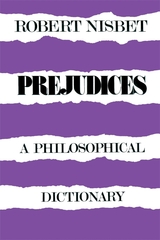 Prejudices: A Philosophical Dictionary
Robert Nisbet
Harvard University Press, 1982 A great moralist and social thinker illuminates the most vexing issues of our time—war, old age, racism, abortion, boredom, crime and punishment, sociobiology, and seventy odd others—in a dazzling book that is by turns hilarious and somber but always vigorous and stimulating. Upon each subject Robert Nisbet offers piercing and often unexpected insights.
Joining the colorful company of Montaigne, Voltaire, Burke, and Mencken, Nisbet writes for his own age and with his own prejudices. He ranges from the historical to the contemporary, from great men to lesser ones, from pieties and wisdoms to fads and effronteries. The work, in other words, is neither philosophy nor a dictionary (except that the subject matter is arranged in alphabetical order), but the distillation of Nisbet’s wisdom, learning, and profound moral conviction. He argues for liberty over equality, for authority against permissiveness, for religion but also for science, for the individual and his rights but against individualism and entitlements. The center of his thinking is the fervent wish for a community linked by history, religion, and ritual, in which children are raised by families rather than by the state, but in which blind custom and belief are questioned and creativity emerges. Determinism of any kind he finds untrue to human nature and history. Man is free to improve himself or destroy himself.
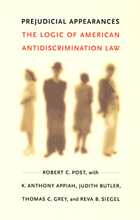 Prejudicial Appearances: The Logic of American Antidiscrimination Law
Robert C. Post, with K. Anthony Appiah, Judith Butler, Thomas C. Grey, and Reva B. Siegel
Duke University Press, 2001 In Prejudicial Appearances noted legal scholar Robert C. Post argues modern American antidiscrimination law should not be conceived as protecting the transcendental dignity of individual persons but instead as transforming social practices that define and sustain potentially oppressive categories like race or gender. Arguing that the prevailing logic of American antidiscrimination law is misleading, Post lobbies for deploying sociological understandings to reevaluate the antidiscrimination project in ways that would render the law more effective and just.
Four distinguished commentators respond to Post’s provocative essay. Each adopts a distinctive perspective. K. Anthony Appiah investigates the philosophical logic of stereotyping and of equality. Questioning whether the law ought to endorse any social practices that define persons, Judith Butler explores the tension between sociological and postmodern approaches to antidiscrimination law. Thomas C. Grey examines whether Post’s proposal can be reconciled with the values of the rule of law. And Reva B. Siegel applies critical race theory to query whether antidiscrimination law’s reshaping of race and gender should best be understood in terms of practices of subordination and stratification.
By illuminating the consequential rhetorical maneuvers at the heart of contemporary U.S. antidiscrimination law, Prejudical Appearances forces readers to reappraise the relationship between courts of law and social behavior. As such, it will enrich scholars interested in the relationships between law, rhetoric, postmodernism, race, and gender.
Preliminaries to Linguistic Phonetics
Peter Ladefoged
University of Chicago Press, 1971 This book is about some of the phonetic events that occur in the languages of the world. The data described consist mainly of contrasts observable at the systematic phonetic level in a wide variety of languages.
A Preliminary Discourse on the Study of Natural Philosophy
John F. W. Herschel
University of Chicago Press, 1987 Originally published in 1830, this book can be called the first modern work in the philosophy of science, covering an extraordinary range of philosophical, methodological, and scientific subjects.
"Herschel's book . . . brilliantly analyzes both the history and nature of science."—Keith Stewart Thomson, American Scientist
Preliminary Discourse to the Encyclopedia of Diderot
Jean Le Rond d'Alembert
University of Chicago Press, 1995 Preliminary Discourse to the Encyclopedia of Diderot expresses the hopes, dogmas, assumptions, and prejudices that have come to characterize the French Enlightenment. In this preface to the Encyclopedia, d'Alembert traces the history of intellectual progress from the Renaissance to 1751. Including a revision of Diderot's Prospectus and a list of contributors to the Encyclopedia, this edition, elegantly translated and introduced by Professor Richard Schwab, is one of the great works of the Enlightenment and an outstanding introduction to the philosophes.
Preliminary List of the Compositae in Northeastern Brazil
D. J. Nicholas Hind and Elaine B. Miranda
Royal Botanic Gardens, Kew, 2000 A checklist of 486 species, in 143 genera, with entries listed alphabetically and sorted by state, collector and number. The list brings together the results of an examination of some 4,200 Northeastern Brazilian Compositae specimens; and is the fourth title to be published in the current series. The introductory text is presented in both English and Portuguese languages.
Preliminary List of the Cyperaceae in Northeastern Brazil
A. C. Araujo, E. César, and D. Simpson
Royal Botanic Gardens, Kew, 2000 Between 2002 and 2004, 1392 Cyperaceae specimens were examined and the information repatriated. This checklist records 191 species in 24 genera, with entries listed alphabetically and sorted by state, collector and number.
Preliminary List of the Leguminosae in Northeastern Brazil
Edgley A. César, Fabricio S. Juchum, and Gwilym Lewis
Royal Botanic Gardens, Kew, 2006 Many legume specimens from Bahia are deposited at the Royal Botanic Gardens, Kew, a large proportion having been added to the collections as a direct result of the long-standing collaboration between Brazil and Kew.
For the purposes of this checklist, the second in the series, 9,066 specimens were examined and 869 species are recorded in 135 genera.
Prelude: Poems
Brynne Rebele-Henry
University of Pittsburgh Press, 2022 Finalist, 2023 Lammy Award in Lesbian Poetry
Prelude delineates the gay female experience through a poetic reconstruction of the girlhood of Catherine of Siena, a Catholic saint who lived in 1300s Italy and disobeyed her parents by refusing marriage to devote her life to God. Through a historical lens, Brynne Rebele-Henry examines the erasure of gay women’s lives and offers a perspective of medieval queer girlhood while considering themes such as violence, desire, and the lesbian body.
 A Prelude to Biblical Folklore: UNDERDOGS AND TRICKSTERS
Susan Niditch
University of Illinois Press, 1987 Treating Old Testament stories as the product of an oral traditional world, A Prelude to Biblical Folklore sets biblical narrative in a broad cross-cultural context and reveals much about the richness and complexity of the ancient Israelite civilization that produced it.
Using a unique combination of biblical scholarship and folklore methodology, Susan Niditch tracks stories of biblical characters who become heroes against the odds, either through trickery or through native wisdom, physical prowess, and the help of human or divine agents. In this volume, originally published as Underdogs and Tricksters, Niditch examines three cross-sections of the Old Testament in detail: stories in Genesis in which patriarchs pretend that their wives are really their sisters; the contrasting stories of two younger sons, the trickster Jacob and the earnest underdog Joseph; and the story of Esther as a paradigm of feminine wisdom pitted against unjust authority.
Linking these Old Testament heroes to the legendary tricksters and underdogs of other cultures, Niditch shows how the Israelites' worldview and self-image are reflected in the way biblical authors tell their stories. Through a thoughtful analysis of style, content, narrative choices, and attitudes to issues of gender and political authority in biblical narrative, A Prelude to Biblical Folklore draws persuasive conclusions about the identity, location, and provenance of the stories' authors and their audiences.
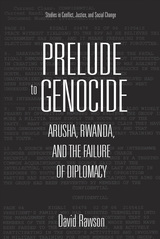 Prelude to Genocide: Arusha, Rwanda, and the Failure of Diplomacy
David Rawson
Ohio University Press, 2018 As the initial US observer, David Rawson participated in the 1993 Rwandan peace talks at Arusha, Tanzania. Later, he served as US ambassador to Rwanda during the last months of the doomed effort to make them hold. Despite the intervention of concerned states in establishing a peace process and the presence of an international mission, UNAMIR, the promise of the Arusha Peace Accords could not be realized. Instead, the downing of Rwandan president Habyarimana’s plane in April 1994 rekindled the civil war and opened the door to genocide. In Prelude to Genocide, Rawson draws on declassified documents and his own experiences to seek out what went wrong. How did the course of political negotiations in Arusha and party wrangling in Kigali, Rwanda, bring to naught a concentrated international effort to establish peace? And what lessons are there for other international humanitarian interventions? The result is a commanding blend of diplomatic history and analysis that is a milestone read on the Rwandan crisis and on what happens when conflict resolution and diplomacy fall short. Published in partnership with the ADST-DACOR Diplomats and Diplomacy Series.
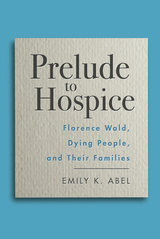 Prelude to Hospice: Florence Wald, Dying People, and their Families
Abel, Emily K.
Rutgers University Press, 2018 Hospices have played a critical role in transforming ideas about death and dying. Viewing death as a natural event, hospices seek to enable people approaching mortality to live as fully and painlessly as possible. Award-winning medical historian Emily K. Abel provides insight into several important issues surrounding the growth of hospice care. Using a unique set of records, Prelude to Hospice expands our understanding of the history of U.S. hospices. Compiled largely by Florence Wald, the founder of the first U.S. hospice, the records provide a detailed account of her experiences studying and caring for dying people and their families in the late 1960s and early 1970s. Although Wald never published a report of her findings, she often presented her material informally. Like many others seeking to found new institutions, she believed she could garner support only by demonstrating that her facility would be superior in every respect to what currently existed. As a result, she generated inflated expectations about what a hospice could accomplish. Wald’s records enable us to glimpse the complexities of the work of tending to dying people.
Prelude to Protectorate in Morocco: Pre-Colonial Protest and Resistance, 1860-1912
Edmund Burke, III
University of Chicago Press, 1977
At last we are beginning to learn as much about the French empire as the British, so that generalizations about imperialism need not continue to be skewed, as they hav,e been in the past, by drawing too many of our data from the British experience. The present study makes a major contribution in this direction, providing as it does the first nearly definitive account of a central series of episodes in the French, African, and Islamic experiences with imperialism.
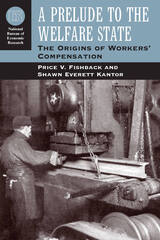 A Prelude to the Welfare State: The Origins of Workers' Compensation
Price V. Fishback and Shawn Everett Kantor
University of Chicago Press, 2000 Workers' compensation was arguably the first widespread social insurance program in the United States and the most successful form of labor legislation to emerge from the early Progressive Movement. Adopted in most states between 1910 and 1920, workers' compensation laws have been paving seen as the way for social security, Medicare, unemployment insurance, and eventually the broad network of social welfare programs we have today.
In this highly original and persuasive work, Price V. Fishback and Shawn Everett Kantor challenge widespread historical perceptions, arguing that, rather than being an early progressive victory, workers' compensation succeeded because all relevant parties—labor and management, insurance companies, lawyers, and legislators—benefited from the legislation. Thorough, rigorous, and convincing, A Prelude to the Welfare State: The Origins of Workers' Compensation is a major reappraisal of the causes and consequences of a movement that ultimately transformed the nature of social insurance and the American workplace.
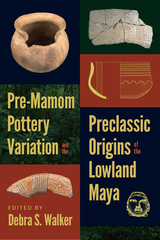 Pre-Mamom Pottery Variation and the Preclassic Origins of the Lowland Maya
Debra S. Walker
University Press of Colorado, 2022 Pre-Mamom Pottery Variation and the Preclassic Origins of the Lowland Maya summarizes archaeological researchers’ current views on the adoption and first use of pottery across the Maya lowlands. Covering the early Middle Preclassic period, when communities began using and producing pottery for the first time (roughly 1000–600 BC), through to the establishment of a recognizably Maya tradition, termed the Mamom ceramic sphere (about 600–300 BC), the book demonstrates that the adoption was broadly contemporary, with variation in how the new technology was adapted locally.
Analyzing ceramics found at sites in Belize, Petén (Guatemala), and Mexico, the contributors provide evidence that the pre-Mamom expansion of pottery resulted from increased dependence on maize agriculture, exploitation of limestone caprock, and greater reliance on a preexisting system of long-distance exchange. The chapters describe the individual experiences of new potting communities at various sites across the region. They are supplemented by appendixes presenting key chronological data as well as the principal types and varieties of pre-Mamom ceramic complexes across the various spheres: Xe, Eb, Swasey, Cunil, and Ek.
A significant amount of new material has been excavated in the last decade, changing what is known about the early Middle Preclassic period and making Pre-Mamom Pottery Variation and the Preclassic Origins of the Lowland Maya a first read of the early ceramic prehistory of the Maya lowlands. It will be a valuable resource for students and scholars interested in the archaeology of the Maya lowlands, Mesoamerican social complexity, and ceramic technology.
Contributors: E. Wyllys Andrews V, Jaime Awe, George J. Bey III, Ronald L. Bishop, Michael G. Callaghan, Ryan H. Collins, Kaitlin Crow, Sara Dzul Góngora, Jerald Ek, Tomás Gallareta Negrón, Bernard Hermes, Takeshi Inomata, Betsy M. Kohut, Laura J. Kosakowsky, Wieslaw Koszkul, Jon Lohse, Michael Love, Nina Neivens, Terry Powis, Duncan C. Pring, Kathryn Reese-Taylor, Prudence M. Rice, Robert M. Rosenswig, Kerry L. Sagebiel, Donald A. Slater, Katherine E. South, Lauren A. Sullivan, Travis Stanton, Juan Luis Velásquez Muñoz, Debra S. Walker, Michal Wasilewski, Jaroslaw Źrałka
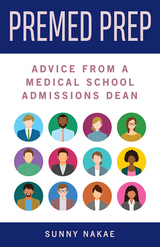 Premed Prep: Advice from a Medical School Admissions Dean
Sunny Nakae
Rutgers University Press, 2021 If you’re a student hoping to apply to medical school, you might be anxious or stressed about how best to prepare. What classes should you take? What kinds of research, clinical, and volunteer opportunities should you be pursuing? What grades and MCAT scores do you need? How can you stand out among thousands of applicants?
Premed Prep answers all these questions and more, with detailed case studies and insider tips that can help premed students authentically prepare and enjoy the journey from the very beginning. Sunny Nakae draws from her many years of experience as a medical school admissions dean to offer wise and compassionate advice that can help premed students of all backgrounds. She also has specific tips for students who are first-generation, minority, non-traditional, and undocumented.
Both forthright and supportive, Nakae’s advice is offered in a keep-it-real style that gives premed students a unique window into how admissions committees view and assess them. Premed Prep covers how to approach preparation with a focus on exploration and growth, and how to stop obsessing over med school application checklists. This book will do more than help you get a seat in medical school; it will start you on the process of becoming a successful future physician.
 Premier Issue: Studies in Working-Class History of the Americas, Volume 1
Leon Fink
Duke University Press The inaugural issue of Labor offers an example of what readers can expect to find on a regular basis—full coverage of new trends in labor history. It features an extensive interview with retired Yale University professor David Montgomery, the acclaimed “dean” of the new labor history since the 1970s. One article plumbs management and labor archives as well as oral histories to reconstruct the patterns of abuse encountered by women on automobile shop floors from 1930 to 1970. Drawing on fieldwork in a southern California domestic service placement agency, a contributor documents the commodification of gender and ethnic stereotypes in the international maid trade. Another essay begins a two-part series on the history of U.S. labor and international solidarity; still another explores the recent desecration of the memorial to victims of the Ludlow Massacre. Contributors. James R. Barrett, Joshua Brown, Leon Fink, Dana Frank, John French, James Green, Julie Greene, Gregory Kealey, Kristen Hill Maher, Steve Meyer
 Premises: Essays on Philosophy from Kant to Celan
Werner Hamacher
Harvard University Press, 1996 "Poetry does not impose, it exposes itself," wrote Paul Celan. Werner Hamacher's investigations into crucial texts of philosophical and literary modernity show that Celan's apothegm is also valid for the structure of understanding and for language in general. "Subject position" is widely invoked today, yet Hamacher is the first to thoroughly investigate the premises for this invocation. He demonstrates that the promise of a subject position is not only unavoidable--and thus produces more and more fundamentalisms--but is also unattainable and therefore always open to innovation, revision, and unexpected transformation. In a book that is both philosophical and literary, Hamacher gives us the fullest account of the vast disruption in the very nature of our understanding that was first unleashed by Kant's critique of human subjectivity.
In light of the double nature of every premise--that it is promised but never attainable--Hamacher gives us nine decisive themes, topics, and texts of modernity: the hermeneutic circle in Schleiermacher and Heidegger, the structure of ethical commands in Kant, Nietzsche's genealogy of moral terms and his exploration of the aporias of singularity, the irony of reading in de Man, the parabasis of language in Schlegel, Kleist's disruption of narrative representation, the gesture of naming in Benjamin and Kafka, and the incisive caesura that Paul Celan inserts into temporal and linguistic reversals.
There is no book that so fully brings the issues of both critical philosophy and critical literature into reach.
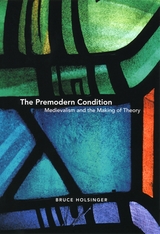 The Premodern Condition: Medievalism and the Making of Theory
Bruce Holsinger
University of Chicago Press, 2005 The Premodern Condition identifies and explains a surprising affinity for medievalism and medieval studies among the leading figures of critical theory. Drawing on a wide range of philosophical, literary-critical, and sociological works produced within the French nouvelle critique of the 1960s, Holsinger argues for reconceiving these discourses, in part, as a brilliant amalgamation of medievalisms.
Holsinger shows that the preoccupation with medieval cultures and practices among Bataille, Derrida, Lacan, Barthes, Bourdieu, and their cohorts was so wide ranging that it merits recognition as one of the most significant epiphenomena of postwar French thought. Not simply an object of nostalgic longing or an occasional source of literary exempla, the medieval epoch was continually mined by these thinkers for specific philosophical vocabularies, social formations, and systems of thought.
To supplement its master thesis, The Premodern Condition also contains original essays by Bataille and Bourdieu—translated here for the first time into English—that testify in various ways to the strange persistence of medievalisms in French postwar avant-garde writings. What results is an important and original work that will be a touchstone for specialists in medieval studies and critical theory alike.
The Pre-Modern Manuscript Trade and its Consequences, ca. 1890–1945
Laura Cleaver
Arc Humanities Press, 2024 This collection brings together current research into the development of the market for pre-modern manuscripts. Between 1890 and 1945 thousands of manuscripts made in Europe before 1600 appeared on the market. Many entered the collections in which they have remained, shaping where and how we encounter the books today. These collections included libraries that bear their founders’ names, as well as national and regional public libraries. The choices of the super-rich shaped their collections and determined what was available to those with fewer resources. In addition, wealthy collectors sponsored scholarship on their manuscripts and participated in exhibitions, raising the profile of some books. This volume examines the collectors, dealers, and scholars who engaged with pre-modern books, and the cultural context of the manuscript trade in this era.
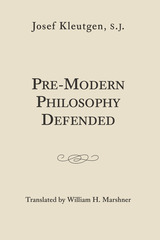 Pre-Modern Philosophy Defended
Josef Kleutgen
St. Augustine's Press, 2014 “Pre-modern philosophy” means the line of reflection that started with Plato andvAristotle, passed through Augustine and Boethius, and reached its acme in Aquinas, Scotus, and Suarez. The whole line was harshly judged by Descartes, then mocked by the empiricsts of the 18th Century. Why, then, did Pope Leo XII make a determined effort to revive it? And, more importantly, why was the revival a stunning success by the middle of the 20th Century? The answers to both questions are found in a famous German book, Philosophie der Vorzeit by Josef Kleutgen, now available for the first time in English. Pre-ModernPhilosophy Defended shaped and strengthened Pope Leo’s resolve. It showed how inaccurate the harsh judgments had been and how sadly inferior the modern replacements from Descartes to Hegel had turned out to be in many respects. Not in all. Kleutgen was no knee-jerk reactionary. He made no bones about the obsolete status of pre-Newtonian physics and cosmology. Rather, he focused on the central boast of “modern” thought, namely, that it had turned at least to the “subject” and had provided a long-needed thing called a “critique of knowledge.” This book is must reading for intellectual historians and for philosophers working today in epistemology. But most of all, it is essential reading for laity and clergy concerned about revivals of modernism in the church. What was modernism, after all, but an attempt to make the Church revise her theology in the “light” of Kant or Hegel? This is why every Modernist knew Kleutgen’s name and hated this book. Here is the first English translation (from the German) of the master work of Josef Kleutgen, the nineteenth century social philosopher whose thought lies at, or near, the heart of Catholic Social Thought. Kleutgen is widely and rightly seen as the shadow author of the social encyclicals of Leo XII. Leo’s Rerum Novarum remains the origin and constant reference point of all Catholic Social Teaching. And Popes since have dated their own social encyclicals from Rerum Novarum – hence, Quadragesimo anno and Centesimus annus. —Gerard V. Bradley, University of Notre Dame
Pre-Modern Philosophy Defended is must reading for intellectual historians and for philosophers working today in epistemology. And it is essential reading for laity and clergy concerned about revivals of modernism in the church. What was modernism, after all, but an attempt to make the Church revise her theology in the ‘light’ of Kant or Hegel? This is why every Modernist knew Kleutgen's name and hated Philosophie der Vorzeit (Pre-Modern Philosophy Defended).
Premodern Rulership and Contemporary Political Power: The King's Body Never Dies
Edited by Karolina Mroziewicz and Aleksander Sroczynski
Amsterdam University Press, 2017 In the medieval period, the monarch was seen as the embodiment of the community of his kingdom, the body politic. And while we've long since shed that view, it nonetheless continues to influence our understanding of contemporary politics. This book offers thirteen case studies from premodern and contemporary Europe that demonstrate the process through which political corporations-bodies politic-were and continue to be constructed and challenged. Drawing on history, archaeology, literary criticism, and art history, the contributors survey a wide geographical and chronological spectrum to offer a panoramic view of these dynamic political entities.
 Prenatal Diagnosis and Selective Abortion
Harry Harris
Harvard University Press, 1975 The ability to identify and abort fetuses with certain genetic abnormalities is among the most recent and most important of medical advances. In this book, one of the world's leading medical geneticists, Harry Harris, discusses the promise and the perils of the new techniques. Dr. Harris writes with great clarity; he explains technical concepts and terms so well that a layman can follow his account with little effort. This book will serve as an excellent introduction to a large and growing literature.
Dr. Harris begins by explaining methods of prenatal diagnosis and the kinds of disease that can, at present, be identified in utero. He identifies technological limitations of the procedure and also discusses certain theoretical factors that limit its future applicability. The book concludes with a long and balanced examination of ethical issues entailed by the practice of selective abortion. The author limits discussion of his own opinions in favor of evaluating the main contemporary positions and exploring the basis of controversy. He makes clear, however, his own view that there are clear advantages to the technique and clear limitations and that there will always be gray areas in which decision must be painful and individual—unaided by pat moralizing.
 Prenatal Screening, Policies, and Values: The Example of Neural Tube Defects
Elena Nightingale
Harvard University Press Rapid development of sophisticated new techniques has vastly increased physicians' ability to detect congenital disorders before birth. Yet advances in treatment, before or after birth, have been very modest. This discrepancy leads to ethical and social problems that require serious attention by professionals and patients alike. This innovative book tackles such problems in the case of prenatal screening for neural tube defects. Afflicting about 7,000 newborn babies each year in the United States, neural tube defects are serious abnormalities in the development of the brain and spinal cord that have grave consequences for the child and family.
The editors, Elena O. Nightingale, a geneticist, physician, and expert in health policy, and Susan B. Meister, a specialist in parent-child nursing, social and developmental psychology, and quantitative methods, led a multidisciplinary effort by distinguished Harvard faculty, including economist Richard Zeckhauser and clinical decision analyst Barbara J. McNeil. Other contributors include Donald S. Shepard, Mary L. Kiely, and Stephen G. Pauker. The book examines the impact of technology assessment, cost effectiveness analysis, and decision analysis on reaching decisions about prenatal screening. The book includes a discussion of the results of formal analyses against a backdrop of our basic ethical and societal values, as well as the analyses themselves. Health care workers, policymakers, and concerned individuals will find this volume informative and thought provoking.
 Prenatal Testing and Disability Rights
Erik Parens and Adrienne Asch, Editors
Georgetown University Press, 2000 As prenatal tests proliferate, the medical and broader communities perceive that such testing is a logical extension of good prenatal care—it helps parents have healthy babies. But prenatal tests have been criticized by the disability rights community, which contends that advances in science should be directed at improving their lives, not preventing them. Used primarily to decide to abort a fetus that would have been born with mental or physical impairments, prenatal tests arguably reinforce discrimination against and misconceptions about people with disabilities. In these essays, people on both sides of the issue engage in an honest and occasionally painful debate about prenatal testing and selective abortion. The contributors include both people who live with and people who theorize about disabilities, scholars from the social sciences and humanities, medical geneticists, genetic counselors, physicians, and lawyers. Although the essayists don't arrive at a consensus over the disability community's objections to prenatal testing and its consequences, they do offer recommendations for ameliorating some of the problems associated with the practice.
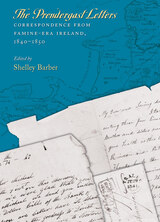 The Prendergast Letters: Correspondence from Famine-Era Ireland, 1840–1850
Shelley Barber
University of Massachusetts Press, 2006 The Prendergast Letters Collection, one of the noteworthy manuscript collections at Boston College's John J. Burns Library, provides an account of the experiences of an ordinary family in County Kerry, Ireland, from 1840 to 1850. The letters include myriad details of the lives of family members and neighbors, reports of weather, agriculture, and local events and economy, along with commentary on matters of national importance such as politician Daniel O'Connell's movement for the Repeal of the Act of Union.
Most important, the letters offer a rare contemporary, firsthand account of Ireland's an Gorta Mor, the Great Famine that began with the failure of the potato crop in 1845. Letters written in the months and years following the announcement of the first crop failure provide insight into not only the sufferings of one family but also the response of the community and nation as this crisis transformed Ireland.
James and Elizabeth Prendergast were the parents of six children. Their letters from Milltown, County Kerry, dictated to a scrivener, were posted to sons Thomas and Jeffrey and daughter Julia Riordan and her husband Cornelius, all of whom had emigrated in search of employment to Boston, Massachusetts—a city that would itself be transformed by the famine-era influx of Irish immigrants.
In addition to transcriptions of the forty-eight letters in the collection, this volume includes contextual essays by historian Ruth-Ann Harris and genealogist Marie Daly. The evidence of the letters themselves, along with the contributions of Harris and Daly, demonstrate the ways in which the family of James Prendergast was at once exceptional and typical.
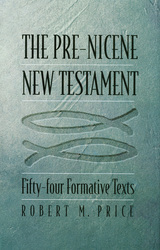 The Pre-Nicene New Testament: Fifty-four Formative Texts
Robert M. Price
Signature Books, 2006 In this monumental work, Professor Price offers an inclusive New Testament canon with twenty-seven additional sacred books from the first three centuries of Christianity, including a few of the Dead Sea Scrolls and Nag Hammadi writings. Price also reconstructs the Gospel of Marcion and the lost Gospel according to the Hebrews. Here, for the first time, is a canon representing all major factions of the early church.
As an interpretive translation, Price’s text is both accurate and readable and is tied more closely to the Greek than most previous translations. Price conveys the meanings of words in context, carefully choosing the right phrase or idiom to convey their sense in English. For words that had a specific theological import when first written, Price leaves the Greek transliteration, giving readers archons for the fallen angels thought to be ruling the world, paraclete for encourager, andpleroma for the Gnostic godhead.
Within the collection, each book is introduced with comments about the cultural setting, information about when a document was probably written, and significant textual considerations, which together form a running commentary that continues into the footnotes. The findings of scholars, documented and summarized by Price, will come as a surprise to some readers. It appears, as Price suggests, that most of what is known about Jesus came by way of revelation to Christian oracles rather than by word of mouth as historical memory. In addition, the major characters in the New Testament, including Peter, Stephen, and Paul, appear to be composites of several historical individuals each, their stories comprising a mix of events, legend, and plot themes borrowed from the Old Testament and Greek literature.
In the New Testament world, theology developed gradually along different trajectories, with tension between the charismatic ascetics such as Marcion and Thecla, as examples, and the emerging Catholic orthodoxy of such clergy as Ignatius and Polycarp. The tension is detectable in the texts themselves, many of which represent “heretical” points of view: Gnostic, Jewish-Christian, Marcionite, and proto-orthodox, and were later edited, sometimes clumsily, in an attempt to harmonize all into one consistent theology.
What may occur to many readers, among the more striking aspects of the narratives, is that the earliest, most basic writings, such as Mark’s Gospel in inarticulate Greek, are ultimately more impressive and inspirational than the later attempts by more educated Christians to appeal to sophisticated readers with better grammar and more allusions to classical mythology and apologetic embellishments.
The critical insights and theories on display in these pages have seldom been incorporated into mainstream conservative Bible translations, and in many ways, Price has made the New Testament a whole new book for readers, allowing them, by virtue of the translation, to comprehend the meaning of the text where it is obscured by the traditional wording. Whatever usefulness teachers, students, and clergy may find here in terms of pedagogical and inspirational value, The Pre-Nicene New Testament is guaranteed to provoke further thought and conversation among the general public—hopefully toward the goal of more personal study and insights.
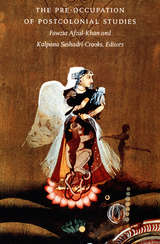 The Pre-occupation of Postcolonial Studies
Fawzia Afzal-Khan and Kalpana Seshadri-Crooks, eds.
Duke University Press, 2000 The Pre-Occupation of Postcolonial Studies contains essays by both leading figures and younger scholars engaged in the field of postcolonial studies. In this state-of-the-field reader, editors Fawzia Afzal-Khan and Kalpana Seshadri-Crooks have created a dynamic forum for contributors from a variety of theoretical and disciplinary vantage points to question both the limits and the limitations of postcolonial thought. Since it burst on the academic scene as the “hot” new disciplinary field during the final decade of the twentieth century, postcolonial studies has faced criticism from those who question its “troubling” trajectories, its sometimes suspect epistemological and pedagogical methods, and its relatively narrow focus. With diverse essays that emerge from such disciplines as South Asian, Latin American, Arab, and Jewish studies, this volume responds to skeptics and adherers alike, addressing not only the broad theoretical issues at stake within the field but also the position of the field itself within the academy, as well as its relationship to modern, postmodern, and Marxist discourses. Contributors offer critiques on ahistorical and universalizing tendencies in postcolonial work and confront the need for scholars to attend to issues of class, ideology, and the effects of neocolonial practices. Seeking to broaden the field’s traditionally literary spectrum of methodologies, these essayists take up large thematic issues to examine specific sites of colonial activities with all of their historical, political, and cultural significance. Closing the volume is an insightful interview with Homi Bhabha, in which he discusses postcolonial studies in the context of contemporary cultural politics and theory. The Pre-Occupation of Postcolonial Studies not only offers an overview of the discipline but also pushes and pulls at the edges of postcolonial studies, offering a comprehensive view of the field’s diversity of thought and envisioning clear pathways for its future. Contributors. Fawzia Afzal-Khan, Ali Behdad, Homi Bhabha, Daniel Boyarin, Neil Larsen, Saree Makdisi, Joseph Massad, Walter Mignolo, Hamid Naficy, Ngugi Wa Thingo, Timothy B. Powell, R. Radhakrishnan, Bruce Robbins, Kalpana Seshadri-Crooks, Ella Shohat, Rajeswari Sunder Rajan
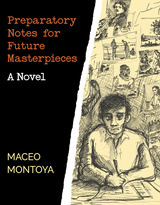 Preparatory Notes for Future Masterpieces: A Novel
Maceo Montoya
University of Nevada Press, 2021 Selected as one of the San Francisco Chronicles' 15 best books of 2021
From critically acclaimed author Maceo Montoya comes an inventive and adventurous satirical novel about a Mexican-American artist’s efforts to fulfill his vision: to paint masterful works of art. His plans include a move to Paris to join the ranks of his artistic hero, Gustave Courbet—except it’s 1943, and he’s stuck in the backwoods of New Mexico. Penniless and prone to epileptic fits, even his mother thinks he’s crazy.
Ernie Lobato has just inherited his deceased uncle’s manuscript and drawings. At the urging of his colleague, an activist and history buff (Lorraine Rios), Ernie sends the materials to a professor of Chicanx literature (Dr. Samuel Pizarro). Throughout the novel, Dr. Pizarro shares his insights and comments on the uncle’s legacy in a series of annotations to his text and illustrations.
As Ernie’s uncle battles a world that is unkind to “starving artists,” he runs into other tormented twentieth-century artists, writers, and activists with ambitions to match his own: a young itinerant preacher (Reies López Tijerina); the “greatest insane artist” (Martín Ramirez); and Oscar Zeta Acosta who is hellbent on self-destruction. Will the fortuitous encounters with these prophetic figures result in his own genius being recognized? Or will his
uncompromising nature consign him to what he fears most?
Told through a combination of words and images in the tradition of classic works such as Don Quixote and Alice in Wonderland, Preparatory Notes for Future Masterpieces features fifty-one vivid black-and-white pen drawings. This complex and engaging story also doubles as literary criticism, commenting on how outsiders’ stories fit into the larger context of the Chicanx literary canon. A unique and multilayered story that embraces both contradiction and possibility, it also sheds new light on the current state of Chicanx literature while, at the same time, contributing to it.
Propulsive, humorous, and full of life, this candid novel will be loved not only by Beat fiction fans but by contemporary fiction lovers as well.
Prepare to Scare: How to tell scary stories
Elizabeth Ellis
Parkhurst Brothers, Inc., 2021 Prepare to Scareis a handbook edited by Circle of Excellence storyteller, Elizabeth Ellis, with contributions by the A-list of scary story writers and tellers on the American Storytelling Festival Circuit. It is a handbook for adults who tell stories to children or other adults in a variety of settings: storytelling events, schools, aftercare programs, camps, and homes.
 Preparing Adult English Learners to Read for College and the Workplace
Edited by Kirsten Schaetzel, Joy Kreeft Peyton, and Rebeca Fernández
University of Michigan Press, 2024 The ability to read effectively—to work with a text, understand its meaning, and talk and write about it with, and for, others—is a critical aspect of academic and workplace success. However, many adults who are learning English as a second or additional language do not have the skills needed to be successful and may drop out of college and university programs before they reach their goal. Bringing together a rich collection of topics and authors, this edited volume provides theory, research, and instructional approaches to help adult education ESL practitioners work effectively with adult learners and prepare them to be successful with reading in academic and workplace settings. After reading this book, adult ESL practitioners will be able to - Prepare adults learning English to apply appropriate reading strategies to a variety of academic and professional contexts and purposes
- Use instructional strategies, including digital technology, to help struggling and developing readers close gaps in skills and conceptual knowledge
- Improve reading comprehension through robust vocabulary instruction
- Enhance reading skills and comprehension through writing instruction that balances sentence-level, discourse, and interactive processes and practices
- Inspire students to become lifelong readers who engage in extensive reading outside of school and professional contexts
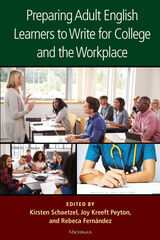 Preparing Adult English Learners to Write for College and the Workplace
Kirsten Schaetzel, Joy Kreeft Peyton, and Rebeca Fernández
University of Michigan Press, 2019 This volume has been written as a response to the new types of communicative demands that the twenty-first century has brought to the workplace. Today’s adult education programs must prepare students to understand complex operations, be problem-solvers, be computer literate, and be fluent in professional English when speaking and writing. As a result, writing has become a bigger need in the field of adult education, and writing instruction must follow suit and extend beyond transactional writing (taking notes, correcting grammar, writing narratives) to rhetorically flexible writing for multiple audiences, purposes, and contexts, whether for a college course or in the workplace. Some of the specific types of writing students need now are the ability to: write argumentative, technical, and informative texts; create, argue for, and support a thesis statement; summarize; write concisely with appropriate vocabulary; produce a well-edited piece understandable to native speakers; and use and credit sources.
The volume is organized into four parts: Setting the Stage for Teaching Writing, Supporting the Writing Process, Working with Beginning Writers, and Aligning Writing with Accountability Systems. Chapters are written by current (or former) adult educators with experience across levels. Each chapter introduces an approach based on research that can guide writing instruction and provides specific guidance and tools for implementation. Questions open and close the chapters to guide reading and frame future exploration. JoAnn (Jodi) Crandall has written the Epilogue.
Readers will discover ways to move adults into higher education and careers by helping them be college and career ready, to integrate writing into the existing curriculum in adult education programs at all levels, including content classes, and to teach writing according to national and state standards.
Preparing Data for Sharing: Guide to Social Science Data Archiving
Data Archiving and Networked Services
Amsterdam University Press, 2010
This data guide takes readers through the cycle of social science research, from applying for a research grant, through conducting the data collection phase, and ultimately to preparing the data for deposit in archives or data repositories. An adaptation of the fourth edition of the Guide to Social Science Data Preparation and Archiving of 2009 by the Inter-University Consortium for Political and Social Research at the University of Michigan, this publication will help researchers to manage, document, and archive their data and to think broadly about which types of digital content should be deposited in such an archive.
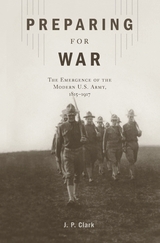 Preparing for War: The Emergence of the Modern U.S. Army, 1815–1917
J. P. Clark
Harvard University Press, 2017 The U.S. Army has always regarded preparing for war as its peacetime role, but how it fulfilled that duty has changed dramatically over time. J. P. Clark traces the evolution of the Army between the War of 1812 and World War I, showing how differing personal experiences of war and peace among successive generations of professional soldiers left their mark upon the Army and its ways.
Nineteenth-century officers believed that generalship and battlefield command were more a matter of innate ability than anything institutions could teach. They saw no benefit in conceptual preparation beyond mastering technical skills like engineering and gunnery. Thus, preparations for war were largely confined to maintaining equipment and fortifications and instilling discipline in the enlisted ranks through parade ground drill. By World War I, however, Progressive Era concepts of professionalism had infiltrated the Army. Younger officers took for granted that war’s complexity required them to be trained to think and act alike—a notion that would have offended earlier generations. Preparing for War concludes by demonstrating how these new notions set the conditions for many of the successes—and some of the failures—of General Pershing’s American Expeditionary Forces.
Preparing North Korean Elites for Unification
Bruce W. Bennett
RAND Corporation, 2017 This report examines what could be done to convince North Korean elites that unification would be good for them. It describes five areas of concern that North Korean elites would likely have about the outcomes of unification and proposes policies that the Republic of Korea government could adopt that would give North Korean elites hope for an acceptable unification outcome.
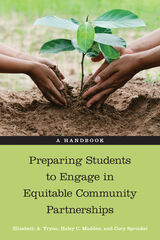 Preparing Students to Engage in Equitable Community Partnerships: A Handbook
Elizabeth A. Tryon
Temple University Press, 2023 When done properly, community engagement in academia can have value for all stakeholders. Authentic experiences are more useful for students; faculty can add new knowledge to the field and their own toolbelts; and communities feel their investment has generated a useful deliverable or even a long-term partnership.
Preparing Students to Engage in Equitable Community Partnerships provides a wealth of valuable resources and activities to help impart ideas of identity, privilege, oppression, bias, and power dynamics to best support students and community in these relationships. Believing that authenticity only comes about in an atmosphere of mutual respect and self-awareness, the authors argue for cultural and intellectual humility.
Each chapter looks at topics and issues through different lenses, complete with underlying theories, and relates those discussions to concrete classroom activities, facilitation strategies, and scholarly frames. In addition, the authors include contributions from a diverse group of practitioners at community colleges, private colleges, historically Black colleges and universities, and minority-serving institutions.
Preparing Students to Engage in Equitable Community Partnerships is a much-needed, comprehensive resource for community-engaged professionals as they prepare students for building relationships when entering a community for learning or research purposes.
 Preparing the Modern Meal: Urban Capitalism and Working-Class Food in Kenya's Port City
Devin Smart
Ohio University Press, 2025 A case study on how twentieth-century urban capitalism created a new food system for Mombasa’s working class. In the early twentieth century, East Africans lived primarily in rural areas, cultivating most of the food they consumed. By the start of the twenty-first century, though, millions of people lived in cities, where they purchased their food from markets and eateries. This transformation reflects broader historical shifts in food production, preparation, and consumption throughout the world from a rural subsistence model to a commercial system. Preparing the Modern Meal explores this economic revolution in Mombasa, Kenya, and examines the experiences of those who migrated from rural settings to an Indian Ocean town where they became dependent on the capitalist market for their daily meals. The change to a commercial food system reshaped the culinary culture of East Africa. In rural communities, diets were diverse and varied with the seasons. Conversely, Mombasa’s commercial supply chains, which steadily delivered staples like maize meal, wheat flour, tea, and meat, led to a more uniform urban cuisine that remained consistent throughout the year. Urbanization also altered gender roles in cooking. In rural households women prepared the food, but in Mombasa many workers lived in all-male housing and had to cook for themselves. Some even took up cooking as a profession, thus expanding the role of men in the culinary domain. In addition to these themes, Preparing the Modern Meal reviews the emergence of new businesses, particularly those of street food vendors who provided affordable meals in residential neighborhoods and to nearby workplaces. However, these makeshift eateries often clashed with the vision for commerce in a modern city held by municipal officials, who often sought to eliminate these businesses through fines, arrests, and demolition campaigns. Through the lens of food, this book explores the conflicts between elite ideas about urban modernity and the actual ways that poor communities made their lives work in an unequal city.
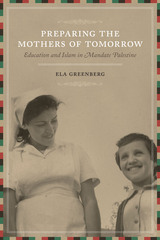 Preparing the Mothers of Tomorrow: Education and Islam in Mandate Palestine
By Ela Greenberg
University of Texas Press, 2009 From the late nineteenth century onward, men and women throughout the Middle East discussed, debated, and negotiated the roles of young girls and women in producing modern nations. In Palestine, girls' education was pivotal to discussions about motherhood. Their education was seen as having the potential to transform the family so that it could meet both modern and nationalist expectations. Ela Greenberg offers the first study to examine the education of Muslim girls in Palestine from the end of the Ottoman administration through the British colonial rule. Relying upon extensive archival sources, official reports, the Palestinian Arabic press, and interviews, she describes the changes that took place in girls' education during this time. Greenberg describes how local Muslims, often portrayed as indifferent to girls' education, actually responded to the inadequacies of existing government education by sending their daughters to missionary schools despite religious tensions, or by creating their own private nationalist institutions. Greenberg shows that members of all socioeconomic classes understood the triad of girls' education, modernity, and the nationalist struggle, as educated girls would become the "mothers of tomorrow" who would raise nationalist and modern children. While this was the aim of the various schools in Palestine, not all educated Muslim girls followed this path, as some used their education, even if it was elementary at best, to become teachers, nurses, and activists in women's organizations.
 A Preponderance of Starry Beings: Stories
Samantha Edmonds
Northwestern University Press, 2025 Genre-bending stories of the cosmos and the worlds within our own skin Blending fairy tale and science fiction with the otherworldliness of adolescence, A Preponderance of Starry Beings is a collection for anyone preoccupied with looking skyward. These stories probe the experience of coming of age on the outskirts of the universe, whether that be a small Midwestern town or a distant galaxy, and of weighing earthly obligations against the vast promises of space. In a sleepy Ohio neighborhood, two girls seek refuge from their homophobic schoolmates in an antiques shop filled with Star Trek memorabilia. On a generation spaceship, children revolt against their parents’ plans to colonize a distant world. Deep in the Florida Everglades, seven sisters must protect their otherworldly mythology when two men arrive to fix the family automobile. A Preponderance of Starry Beings invites us into a mundane and whimsical world of night islands, small towns, and faith lost and found, where a safe landing matters less than taking the leap.
The Preposition Book: Practice toward Mastering English Prepositions
Tom Cole
University of Michigan Press, 2006 ThePreposition Book is intended as a thorough guide and workbook to address students’ questions and misconceptions regarding English prepositions and improve their ability to use prepositions fluently. The book comprehensively covers prepositions and also provides opportunities to practice many other essential points of English grammar and usage practice.
The Preposition Book is organized by level of difficulty but was written for
intermediate-level students. Many exercises are included within each chapter, and Putting It Together and Expansion Exercises are designed to give students even more opportunity to practice. A Comprehensive Test appears at the end of each chapter.
Preprints: Their Evolving Role in Science Communication
Iratxe Puebla
Against the Grain, LLC, 2022 This briefing discusses the history and role of preprints in the biological sciences within the evolving open science landscape. The focus is on the explosive growth of preprints as a publishing model and the associated challenges of maintaining technical infrastructure and establishing sustainable business models. A preprint is a scholarly manuscript posted by the author(s) to a repository or platform to facilitate open and broad sharing of early work without any limitations to access. Currently there are more than 60 preprint servers representing different subject and geographical domains, each one evolving at a different based on adoption patterns and disciplinary ethos. This briefing will offer invaluable help to those who wish to understand this rapidly evolving publishing model.
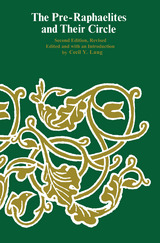 The Pre-Raphaelites and Their Circle
Edited by Cecil Y. Lang
University of Chicago Press, 1975 This useful volume presents the major works of the five leading Pre-Raphaelite poets. Foremost in the collection, and included in their entirety are D. G. Rossetti's The House of Life, C. G. Rossetti's "Monna Innominata," William Morris's "Defence of Guenevere," Swinburne's Atalanta in Calydon, and Meredith's "Modern Love." Complementing these major poems is a fine, generous selection of the poets' shorter pieces that are typical of their work as a whole. For this second edition, Cecil Lang has substituted two early Swinburne poems, "The Leper" and "Anactoria," for Fitzgerald's The Rubáiyát of Omar Khayyám. These poems, which the editor describes as "shocking," show a new aspect of Swinburne not discussed previously.
Lang's Introduction describes briefly the founding of the Pre-Raphaelite Brotherhood, discusses each of the Pre-Raphaelite poets, both individually and in relation to the others, and grapples with the questions of definition of Pre-Raphaelitism and the similarities between its painting and poetry. The book is appropriately illustrated with thirty-two works by D. G. Rossetti, John Ruskin, William H. Hunt, and other Pre-Raphaelite artists.
This is the only anthology available that provides a representative selection of the work of these important poets. It will be indispensable to students of Victorian poetry and appreciated by readers interested in the Pre-Raphaelites.
Pres: The Story of Lester Young
Luc Delannoy
University of Arkansas Press, 1993 The critic Norman Granz called tenor saxophonist Lester Young "the greatest musician I have heard on the instrument." Douglas Ramsey speaks of Young as "the gentle bedeviled genius whose vision of beauty found expression even though he was hounded throughout his life by nearly every demon the twentieth century had managed to spawn." This is his story, told with love and candor.
 The Presbyterian Churches and the Federal Union, 1861–1869
Lewis G. Vander Velde
Harvard University Press This book deals with the history of the particular American religious sect which, because of its large and varied membership, its intellectual vigor, and the part played by its clergy in shaping public thought, affords the richest field for a study of the influence of religious organizations upon American life.
The story of the struggle of the Old School Presbyterian leaders to choose between their desire to avoid a break in their church and their feeling that it was their duty to voice their loyalty to the Union forms an interesting and illuminating commentary on the problems of the troublous times of the War of the Rebellion. The minor Presbyterian groups played varying parts, but always occupied more than their proportionate share of public attention because each met its own problems with a characteristically Presbyterian individuality.
Professor Vander Velde’s monograph is important not only for American religious history but also for the fact that it illustrates how closely Church and State were related during the Civil War period.
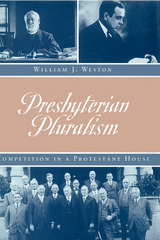 Presbyterian Pluralism: Competition in a Protestant House
William J. Weston
University of Tennessee Press, 1997 Focusing on the heated ideological struggles that occurred within the Presbyterian Church, U.S.A., during the late 1800s and early 1900s, this book offers a compelling and original explanation of how diverse viewpoints can be accommodated within a religious institution. The Presbyterian example, William J. Weston argues, shows clearly that competition is the only effective kind of pluralism for a church —one that leads neither to institutional paralysis nor to irreconcilable division. Much of the current literature in the sociology of religion sees intradenominational conflict in terms of culture wars between two great factions or parties. However, in the competition model that Weston posits in this book, it is actually a third party - the loyalist center - that holds the power and that ultimately determines the outcome of the struggle. Essential reading for sociologists and historians of religion, Presbyterian Pluralism reaches important conclusions that will engage anyone concerned with conflict inside organizational structures and how it might be contained.
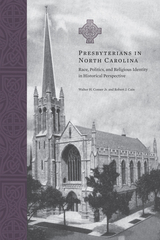 Presbyterians in North Carolina: Race, Politics, and Religious Identity in Historical Perspective
Walter H. Conser
University of Tennessee Press, 2012
This volume is the first comprehensive overview of North Carolina Presbyterians to appear in more than a hundred years. Drawing on congregational and administrative histories, personal memoirs, and recent scholarship—while paying close attention to the relevant social, political, and religious contexts of the state and region—Walter Conser and Robert Cain go beyond older approaches to denominational history by focusing on the identity and meaning of the Presbyterian experience in the Old North State from the seventeenth through the twentieth centuries.
Conser and Cain explore issues as diverse as institutional development and worship experience; the patterns and influence of race, ethnicity, and gender; and involvement in education and social justice campaigns. In part 1 of the book, “Beginnings,” they trace the entrance of Presbyterians—who were legally considered dissenters throughout the colonial period—into the eastern, central, and western sections of the state. The authors show how the Piedmont became the nexus of Presbyterian organizational development and examine the ways in which political movements, including campaigns for American independence, deeply engaged Presbyterians, as did the incandescence of revivalism and agitation for reform, which extended into the antebellum period.
The book’s second section, “Conflict, Renewal, and Reunion,” investigates the denominational tensions provoked by the slavery debate and the havoc of the Civil War, the soul searching that accompanied Confederate defeat, and the rebuilding efforts that came during the New South era. Such important factors as the changing roles of women in the church and the decline of Jim Crow helped pave the way for the eventual reunion of the northern and southern branches of mainline Presbyterianism. By the arrival of the new millennium, Presbyterians in North Carolina were prepared to meet future challenges with renewed confidence.
A model for modern denominational history, this book is an astute and sensitive portrayal of a prominent Protestant denomination in a southern context.
Walter H. Conser Jr. is professor of religion and professor of history at the University of North Carolina, Wilmington. His books include A Coat of Many Colors: Religion and Society along the Cape Fear River of North Carolina and God and the Natural World: Religion and Science in the Natural World.
Before his retirement after thirty-two years of service, Robert J. Cain was head of the Colonial Records Branch at the North Carolina State Archives. He is the editor of The Colonial Records of North Carolina, second series.
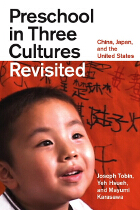 Preschool in Three Cultures Revisited: China, Japan, and the United States
Joseph Tobin, Yeh Hsueh, and Mayumi Karasawa
University of Chicago Press, 2009 Published twenty years ago, the original Preschool in Three Cultures was a landmark in the study of education: a profoundly enlightening exploration of the different ways preschoolers are taught in China, Japan, and the United States. Here, lead author Joseph Tobin—along with new collaborators Yeh Hsueh and Mayumi Karasawa—revisits his original research to discover how two decades of globalization and sweeping social transformation have affected the way these three cultures educate and care for their youngest pupils. Putting their subjects’ responses into historical perspective, Tobin, Hsueh, and Karasawa analyze the pressures put on schools to evolve and to stay the same, discuss how the teachers adapt to these demands, and examine the patterns and processes of continuity and change in each country. Featuring nearly one hundred stills from the videotapes, Preschool in Three Cultures Revisited artfully and insightfully illustrates the surprising, illuminating, and at times entertaining experiences of four-year-olds—and their teachers—on both sides of the Pacific.
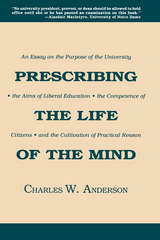 Prescribing the Life of the Mind: An Essay on the Purpose of the University, the Aims of Liberal Education, the Competence of Citizens, and the Cultivation of Practical Reason
Charles W. Anderson
University of Wisconsin Press, 1996 A distinguished political philosopher with years of experience teaching in undergraduate liberal arts programs, Anderson shows how the ideal of practical reason can reconcile academia’s research aims with public expectations for universities: the preparation of citizens, the training of professionals, the communication of a cultural inheritance. It is not good enough, he contends, to simply say that the university should stick to the great books of the classic tradition, or to denounce this tradition and declare that all important questions are a matter of personal or cultural choice. By applying the methods of practical reason, instead, teachers and students will think critically about the essential purposes of any human activity and the underlying arguments of any text.
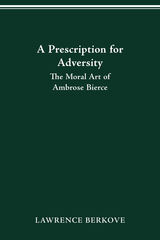 PRESCRIPTION FOR ADVERSITY: THE MORAL ART OF AMBROSE BIERCE
LAWRENCE BERKOVE
Ohio State University Press, 2002 A Prescription for Adversity makes the revolutionary case that Ambrose Bierce, far from being a bitter misanthrope, was instead both a compassionate and moral author. Berkove, focusing on Bierce's short fiction, establishes the necessity of recognizing the pattern of his intellectual and literary development over the course of his career. The author shows that Bierce, probably the American author with the most extensive experience of the Civil War, turned to classical Stoicism and English and French Enlightenment literature in his postwar search for meaning. Bierce's fiction arose from his ultimately unsatisfying encounters with the philosophies those sources offered, but the moral commitment as well as the literary techniques of heir authors, particularly Jonathan Swift, inspired him. Dating Bierce's fiction, and introducing uncollected journalism, correspondence, and important new literary history and biographical information, Berkove brings new insights to a number of stories, including "A Son of the Gods" and "A Horseman in the Sky," but especially "An Occurrence at Owl Creek Bridge," and presents compelling readings of the Parenticide Club tales and "Moxon's Master." A Prescription for Adversity substantiates how Bierce at his best is one of the few American authors who rises to the level of Mark Twain, and the only one who touches Jonathan Swift. A work of both biography and literary criticism, this book rescues Ambrose Bierce and his literature from the neglect to which it has been assigned by "ill-founded, obtuse and unproductive approaches based on skewed notions of his personality and forced or facile readings of individual stories."
A Prescription for Murder: The Victorian Serial Killings of Dr. Thomas Neill Cream
Angus McLaren
University of Chicago Press, 1993 From 1877 to 1892, Dr. Thomas Neill Cream murdered seven women, all prostitutes or patients seeking abortions, in England and North America. A Prescription for Murder begins with Angus McLaren's vividly detailed story of the killings. Using press reports and police dossiers, McLaren investigates the links between crime and respectability to reveal a remarkable range of Victorian sexual tensions and fears. McLaren explores how the roles of murderer and victim were created, and how similar tensions might contribute to the onslaught of serial killing in today's society.
 Prescription TV: Therapeutic Discourse in the Hospital and at Home
Joy V. Fuqua
Duke University Press, 2012 Tracing the history of television as a therapeutic device, Joy V. Fuqua describes how TVs came to make hospitals seem more like home and, later, "medicalized" the modern home. She examines the introduction of television into the private hospital room in the late 1940s and 1950s and then moves forward several decades to consider the direct-to-consumer prescription drug commercials legalized in 1997. Fuqua explains how, as hospital administrators and designers sought ways of making the hospital a more inviting, personalized space, TV sets came to figure in the architecture and layout of health care facilities. Television manufacturers seized on the idea of therapeutic TV, specifying in their promotional materials how TVs should be used in the hospital and positioned in relation to the viewer. With the debut of direct-to-consumer prescription drug advertising in the late 1990s, television assumed a much larger role in the medical marketplace. Taking a case-study approach, Fuqua uses her analysis of an ad campaign promoting Pfizer's Viagra to illustrate how television, and later the Internet, turned the modern home into a clearinghouse for medical information, redefined and redistributed medical expertise and authority, and, in the process, created the contemporary consumer-patient.
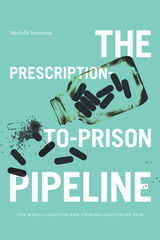 The Prescription-to-Prison Pipeline: The Medicalization and Criminalization of Pain
Michelle Smirnova
Duke University Press, 2023 In The Prescription-to-Prison Pipeline Michelle Smirnova argues that the ongoing opioid drug epidemic is the result of an endless cycle in which suffering is medicalized and drug use is criminalized. Drawing on interviews with eighty incarcerated individuals in Missouri correctional institutions, Smirnova shows how contradictions in medical practices, social ideals, and legal policies disproportionately criminalize the poor for their social condition. This criminalization further exacerbates and perpetuates drug addiction and poverty. Tracing the processes by which social issues are constructed as biomedical ones that necessitate pharmacological intervention, Smirnova highlights how inequitable surveillance, policing, and punishment of marginalized populations intensify harms associated with both treatment and punishment, especially given that the distinctions between the two have become blurred. By focusing on the stories of people whose pain and pharmaceutical treatment led to incarceration, Smirnova challenges the binary of individual and social problems, effectively exploring how the conceptualization, diagnosis, and treatment of substance use may exacerbate outcomes such as relapse, recidivism, poverty, abuse, and death.
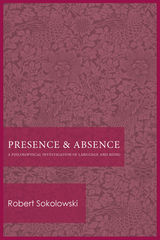 Presence and Absence: A Philosophical Investigation of Language and Being
Robert Sokolowski
Catholic University of America Press, 2017 “Presence and Absence is a book of importance for all who are actively engaged in the philosophical enterprise, whatever their differing persuasions. It shows philosophy to be flourishing in the midst of its own self-proclaimed signs of morbidity.” – The Review of Metaphysics
“A splendid, provocative and profound work, this book explores the manifold ways in which the contrast of presence and absence operate to establish the possibility of human discourse and truthfulness…belongs in every philosophy collection.” – Choice
“Quite simply a superb book, which deserves more than one careful reading. A fresh, unified treatment of a grand philosophical theme, the theme of the connections between thought, truth, and being.” – Man and World
“A thoughtful book about thoughtfulness and truthfulness and their ontological conditions. Simply put, this is a book that will reward its careful reader a hundredfold, for Sokolowski is a speaker who says things in ways that are provocative, exciting, and invariably insightful.” – Journal of the British Society for Phenomenology
“Has few peers in phenomenological literature.” – International Philosophical Quarterly
“[Sokolowski is] an original thinker of the first rank, who has significantly furthered the path of phenomenological philosophy. As well as being an exciting synthesis, a thinking of the previously unthought in predecessors, and a ground-breaking movement, this work is written with a sensitivity to language and its graceful use that one would hope for from one exploring its richness and power.” – Human Studies
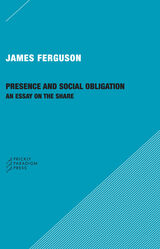 Presence and Social Obligation: An Essay on the Share
James Ferguson
Prickly Paradigm Press, 2021 In precarious and tumultuous times, schemes of social support, including cash transfers, are increasingly indispensable. Yet the inadequacy of the nation-state frame of membership that such schemes depend on is becoming evermore evident, as non-citizens form a growing proportion of the populations that welfare states attempt to govern. In Presence and Social Obligation, James Ferguson argues that conceptual resources for solving this problem are closer to hand than we might think. Drawing on a rich anthropology of sharing, he argues that the obligation to share never depends only on membership, but also on presence: on being “here.” Presence and Social Obligation strives to demonstrate that such obligatory sharing based on presence can be observed in the way that marginalized urban populations access state services, however unequally, across the global South. Examples show that such sharing with non-nationals is not some sort of utopian proposal but part of the everyday life of the modern service-delivering state. Presence and Social Obligation is a critical yet refreshing approach to an ever-growing way of being together.
 Presence in the Flesh: The Body in Medicine
Katharine Young
Harvard University Press, 1997 Any woman who has been examined by a gynecologist could tell Descartes a thing or two about the mind/body problem. Is her body an object? Is it the self? Is it both, and if so, how? Katharine Young takes up this problem in a book that looks at medicine's means of separating self and body--and at the body's ways of resisting.
Disembodiment--rendering the body an object and the self bodyless--is the foundational gesture of medicine. How, then, does medical practice acknowledge the presence of the person in the objectified body? Young considers in detail the "choreography" such a maneuver requires--and the different turns it takes during a routine exam, or surgery, or even an autopsy. Distinctions between public and private, inside and outside, assume new meanings as medical practice proceeds from one venue to the next--waiting room to examining table, anteroom to operating theater, from the body's exterior to its internal organs. Young inspects the management of these and other "boundaries"--as a physician adds layers of clothing and a patient removes layers, as the rules of objective and subjective discourse shift, as notions of intimacy determine the etiquette of exchanges between doctor and patient.
From embodied positions within the realm of medicine and disembodied positions outside it, Young richly conveys the complexity of presence in the flesh.
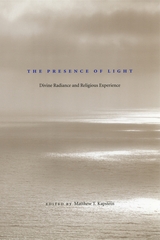 The Presence of Light: Divine Radiance and Religious Experience
Edited by Matthew T. Kapstein
University of Chicago Press, 2004 There is perhaps no greater constant in religious intuition and experience than the presence of light. In spiritual traditions East and West, light is not only ubiquitous but something that assumes strikingly similar forms in altogether different historical and cultural settings. This study examines light as an aspect of religiously valued experiences and its entailments for mystical theology, philosophy, politics, and religious art.
The essays in this volume make an important contribution to religious studies by proposing that it is misleading to conceive of religious experience in terms of an irreconcilable dichotomy between universality and cultural construction. An esteemed group of contributors, representing the study of Asian and Western religious traditions from a range of disciplinary perspectives, suggests that attention to various forms of divine radiance shows that there is indeed a range of principles that, if not universal, are nevertheless very widely occurring and amenable to fruitful comparative inquiry. What results is a work of enormous scope, demonstrating compelling cross-connections that will be of value to scholars of comparative religions, mysticism, and the relationship between art and the sacred.
Contributors:
* Catherine B. Asher
* Raoul Birnbaum
* Sarah Iles Johnston
* Matthew T. Kapstein
* Andrew Louth
* Paul E. Muller-Ortega
* Elliot R. Wolfson
* Mimi Hall Yiengpruksawan
* Hossein Ziai
The Presence of Myth
Leszek Kolakowski
University of Chicago Press, 1989 "[An] important essay by a philosopher who more convincingly than any other I can think of demonstrates the continuing significance of his vocation in the life of our culture."—Karsten Harries, The New York Times Book Review
With The Presence of Myth, Kolakowski demonstrates that no matter how hard man strives for purely rational thought, there has always been-and always will be-a reservoir of mythical images that lend "being" and "consciousness" a specifically human meaning.
"Kolakowski undertakes a philosophy of culture which extends to all realms of human intercourse—intellectual, artistic, scientific, and emotional. . . . [His] book has real significance for today, and may well become a classic in the philosophy of culture."—Anglican Theological Review
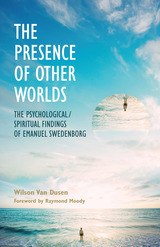 The Presence of Other Worlds: The Psychological and Spiritual Findings of Emanuel Swedenborg
WILSON VAN DUSEN
Swedenborg Foundation Publishers, 2004 In 1974, Wilson Van Dusen published a groundbreaking study on the findings of Emanuel Swedenborg, a book that has inspired thousands to look more closely into Swedenborg's works and to consider the implications of living a useful and thoughtfully directed life. This updated second edition, published on the thirtieth anniversary of the book's original publication, includes a new introduction to this bestselling work.
An account of the monumental journey of an eighteenth-century scientist and philosopher into the depths of his own mind and to spiritual worlds beyond, The Presence of Other Worlds shows how Swedenborg's personal experiences radiate with insights about psychological and spiritual develpments that are relevant to modern-day seekers. It has been hailed since its first publication as a passport for all spiritual voyagers into the human psyche and the innter sanctum of the afterlife.
Dr. Raymond Moody, author of Life After Life, provides a foreword that explains the importance of Swedenborg's mystical experiences in connection with the near-death experience. Dr. James Lawrence presents a tribute to Wilson Van Dusen and his enduring legacy in an afterword.
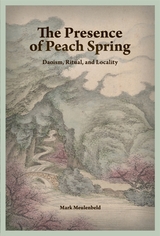 The Presence of Peach Spring: Daoism, Ritual, and Locality
Mark Meulenbeld
Harvard University Press The Presence of Peach Spring radically breaks with conventional interpretations of Tao Qian’s “Record of Peach Blossom Spring” by connecting the tale to its stated geographical location in northern Hunan province (PRC) and focusing on the Daoist lore that surrounds it. Drawing on more than two decades of fieldwork, Mark Meulenbeld uncovers the presence of Peach Spring as a sacred site with a history of more than fifteen hundred years, locally embedded within a complex network of ritual referents. Rather than a primarily textual analysis, Meulenbeld offers a more historically grounded interpretation that engages with the religious manifestations of Peach Spring: on domestic altars, in sacrificial ballads, at Daoist institutions, and, ultimately, as a source of transcendence. Meulenbeld shows that the category of the sacred offers a crucial framework for understanding traditional texts, even if they do not immediately seem to belong to any religious sphere. When read in the context of its native region, the tale of Peach Spring affords readers access to a sacred site, sacred objects, and the enduring traditions of Daoist ritual that continue to maintain its presence today.
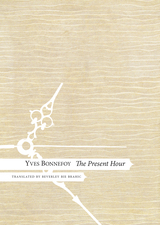 The Present Hour
Yves Bonnefoy
Seagull Books, 2020 From the publication of his first book in 1953, Yves Bonnefoy has been considered the most important and influential French poet since World War II. A prolific writer, critic, and translator, Bonnefoy continues to compose groundbreaking new work sixty years later, constantly offering his readers what Paul Auster has called “the highest level of artistic excellence.”
In The Present Hour, Bonnefoy’s latest collection, a personal narrative surfaces in splinters and shards. Every word from Bonnefoy is multifaceted, like the fragmented figures seen from different angles in cubist painting—as befits a poet who has written extensively about artists such as Goya, Picasso, Braque, and Gris. Throughout this moving collection, Bonnefoy’s poems echo each other, returning to and elaborating upon key images, thoughts, feelings, and people. Intriguing and enigmatic, this mixture of sonnet sequences and prose poems—or, as Bonnefoy sees them, “dream texts”—move from his meditations on friendship and friends like Jorge Luis Borges to a long, discursive work in free verse that is a self-reflection on his thought and process. These poems are the ultimate condensation of Bonnefoy’s ninety years of life and writing and they will be a valuable addition to the canon of his writings available in English.
“Beverley Bie Brahic does a splendid job of translating the latest work of Yves Bonnefoy. She catches his unique combination of human detail and a groping for the beyond. . . . Brahic does full justice to the profoundly moving text—with its frequent shifts between the personal and the searchingly philosophical.”—Joseph Frank, author of Responses to Modernity: Essays in the Politics of Culture
The Present of the Future
Edited by Susanne Witzgall and Kerstin Stakemeier
Diaphanes, 2018 As the world teeters on the brink of crisis and potentially catastrophic change, outlooks for the future have come to be characterized by anxiety. The skepticism that meets utopian visions of the future has given rise to collective nostalgia for seemingly reliable ideas. But rather than stagnate in idealism, how can artists and scholars create the potential for real change?
The result of a lecture series held at the cx centre for interdisciplinary studies at the Academy of Fine Arts, Munich, The Present of the Future explores our current relationship to the future and considers strategies for artists and scholars to establish effective action for shaping alternative futures. Contributors to the book approach this problem from the perspective of diverse disciplines, including art, design, architecture, and philosophy.
 Present Past
Ava Kadishson Schieber
Northwestern University Press, 2016 Present Past is a collection of stories, artwork, and poetry by Ava Kadishson Schieber. Like her debut work, Soundless Roar, this multi-genre collection creates rich and varied pathways for readers to approach Schieber as well as the absorbing events and transformations in her life as a Holocaust survivor. The focus of Present Past is her life after the Shoah. Rejecting stereotypes of survivors as traumatized or broken, Schieber is stark yet exuberant, formidable yet nuanced. The woman who emerges in Schieber’s Present Past is a multifaceted, heterogeneous figure—poet, artist, and survivor. In it, she plays the passionate observer who dispassionately curates the kaleidoscopic memories of her tumultuous personal and professional life in Belgrade, Prague, Tel Aviv, New York, and Chicago. Organized into thirteen chapters, each a blend of images, poems, and narrative, this moving new work offers myriad points of entry to readers of these genres, those fascinated in the relationship between the Holocaust and art, as well as readers interested in memory and survivorship.
 A Present Past: The Brazilian Military Dictatorship and the 1964 Coup
Rodrigo Patto Sá Mott
Sussex Academic Press, 2023 An intellectually rigorous history of the 1964 coup in Brazil and its subsequent recasting in the rhetoric of rightwing extremists as a revolution to save the nation from communism.
The 1964 coup and subsequent military dictatorship in Brazil have become common currency in recent public debates in the country. Extreme right-wing groups surrounding Jair Bolsonaro, the president elected in 2018, cherish and celebrate them as marking the defeat of the left and the beginning of a political regime oriented toward “order and progress.” Rodrigo Patto Sá Motto argues that the political project built around Bolsonaro attempts to impose a distorted and Manichean view of recent history, through both discourse and censorship. The author shows how this view recasts the 1964 coup as a “revolution” that saved Brazilians from communism, manipulating history to convince Brazilians that the military were good rulers, an image connecting them to the present, elected authoritarian government.
A Present Past offers a well-rounded approach to the history of the military dictatorship, analyzing the most controversial topics of the current debate. It clarifies the prevailing circumstances during the dictatorship as well as its contemporary legacies. It acts as a corrective against peddlers of fake news and ultra-right negationists, defending rigorous historiography to counter the authoritarian imposition of a historical narrative that supports dictatorship and the coercive rule of its leaders.
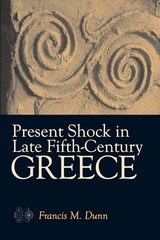 Present Shock in Late Fifth-Century Greece
Francis M. Dunn
University of Michigan Press, 2010 Francis M. Dunn's Present Shock in Late Fifth-Century Greece examines the widespread social and cultural disorientation experienced by Athenians in a period that witnessed the revolution of 411 B.C.E. and the military misadventures in 413 and 404---a disturbance as powerful as that described in Alvin Toffler's Future Shock. The late fifth century was a time of vast cultural and intellectual change, ultimately leading to a shift away from Athenians' traditional tendency to seek authority in the past toward a greater reliance on the authority of the present. At the same time, Dunn argues, writers and thinkers not only registered the shock but explored ways to adjust to living with this new sense of uncertainty. Using literary case studies from this period, Dunn shows how narrative techniques changed to focus on depicting a world in which events were no longer wholly predetermined by the past, impressing upon readers the rewards and challenges of struggling to find their own way forward. Although Present Shock in Late Fifth-Century Greece concentrates upon the late fifth century, this book's interdisciplinary approach will be of broad interest to scholars and students of ancient Greece, as well as anyone fascinated by the remarkably flexible human understanding of time. Francis M. Dunn is Professor of Classics at the University of California, Santa Barbara. He is author of Tragedy's End: Closure and Innovation in Euripidean Drama (Oxford, 1996), and coeditor of Beginnings in Classical Literature (Cambridge, 1992) and Classical Closure: Reading the End in Greek and Latin Literature (Princeton, 1997). "In this fascinating study, Francis Dunn argues that in late fifth-century Athens, life became focused on the present---that moving instant between past and future. Time itself changed: new clocks and calendars were developed, and narratives were full of suspense, accident, and uncertainty about things to come. Suddenly, future shock was now."
---David Konstan, John Rowe Workman Distinguished Professor of Classics and the Humanistic Tradition and Professor of Comparative Literature, Brown University "In this fascinating work, Dunn examines the ways in which the Greeks constructed time and then shows how these can shed new light on various philosophical, dramatic, historical, scientific and rhetorical texts of the late fifth century. An original and most interesting study."
---Michael Gagarin, James R. Dougherty, Jr., Centennial Professor of Classics, the University of Texas at Austin "Interesting, clear, and compelling, Present Shock in Late Fifth-Century Greece analyzes attitudes toward time in ancient Greece, focusing in particular on what Dunn terms 'present shock,' in which rapid cultural change undermined the authority of the past and submerged individuals in a disorienting present in late fifth-century Athens. Dunn offers smart and lucid analyses of a variety of complex texts, including pre-Socratic and sophistic philosophy, Euripidean tragedy, Thucydides, and medical texts, making an important contribution to discussions about classical Athenian thought that will be widely read and cited by scholars working on Greek cultural history and historiography."
---Victoria Wohl, Associate Professor, Department of Classics, University of Toronto
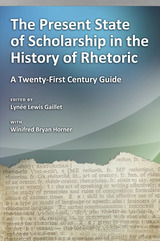 The Present State of Scholarship in the History of Rhetoric: A Twenty-First Century Guide
Edited by Lynée Lewis Gaillet & Winifred Bryan Horner
University of Missouri Press, 2010 Through two previous editions, The Present State of Scholarship in Historical and Contemporary Rhetoric has not only introduced new scholars to interdisciplinary research but also become a standard research tool in a number of fields and pointed the way toward future study.
Adopting research methodologies of revision and recovery, this latest edition includes all new material while still following the format of the original and is constructed around bibliographical surveys of both primary and secondary works addressing the Classical, Medieval, Renaissance, and eighteenth through twentieth century periods within the history of rhetoric. The Present State of Scholarship in the History of Rhetoric doesn’t simply update but rather recasts study in the history of rhetoric.
The authors—experienced and well-known scholars in their respective fields—redefine existing strands of rhetorical study within the periods, expand the scope of rhetorical engagement, and include additional figures and their works. The globalization and expansion of rhetoric are demonstrated in each of these parts and seen clearly in the inclusion of more female rhetors, discussions of historical and contemporary electronic resources, and examinations of rhetorical practices falling outside the academy and the traditional canon.
New to this edition is a cumulative review of twentieth-century rhetoric along with a thematic index designed to facilitate interdisciplinary or specialized study and scholarly research across the traditional historical periods.
As programs incorporating rhetorical studies continue to expand at the university level, students and researchers are in need of up-to-date bibliographical resources. No other work matches the scope and approach of The Present State of Scholarship in the History of Rhetoric, which carries scholarship on rhetoric into the twenty-first century.
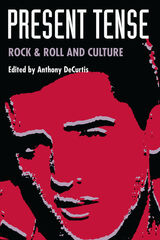 Present Tense: Rock & Roll and Culture
Anthony DeCurtis, ed.
Duke University Press, 1992 The most compelling art form to emerge from the United States in the second half of the twentieth century, rock & roll stands in an edgy relationship with its own mythology, its own musicological history and the broader culture in which it plays a part. In Present Tense, Anthony DeCurtis brings together writers from a wide variety of fields to explore how rock & roll is made, consumed, and experienced in our time.
In this collection, Greil Marcus creates a collage of words and pictures that evokes and explores Elvis Presley's grisly fate as an American cultural image, while Robert Palmer tells the gripping tale of the origins and meanings of the electric guitar. Rap music, MTV, and the issue of gender identity in the work of Bruce Springsteen all undergo thorough examination; rock & roll's complex relationship with the forces of censorship gets a remarkably fresh reading; and the mainstreaming of rock & roll in the 1980s is detailed and analyzed. And, in an interview with Laurie Anderson and an essay by Atlanta musician Jeff Calder, the artists speak for themselves.
Contributors. Jeff Calder, Anthony DeCurtis, Mark Dery, Paul Evans, Glenn Gass, Trent Hill, Michael Jarrett, Alan Light, Greil Marcus, Robert Palmer, Robert B. Ray, Dan Rubey, David R. Shumway, Martha Nell Smith, Paul Smith
 Present Tensions: European Writers on Overcoming Dictatorships
Kristina Kaiserová
Central European University Press, 2009 An intersection of literary works on the question of how dictatorships are overcome, which emerged from a transnational project convening acclaimed writers. The generations, European countries of origin and artistic directions represented are both an advantage and a challenge reflected by this anthology. A considerable variety of motivations drove participants: putting into words a contemporary biography of persecution, a descendant's feeling of personal historical responsibility, or the artistic curiosity of the "outsider". The anthology is dedicated to the imaginative power of literature, and to Central Eastern and South Eastern Europe in particular. The formerly multicultural setting of these countries suffered the most from European dictatorships and their insufficiently processed legacies. The cultural transfer exhibited here will help reduce prejudices and promote new forms of understanding with Western Europe: it aims to further a diversified but common European culture.
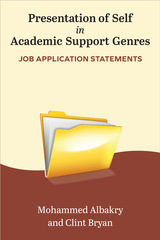 Presentation of Self in Academic Support Genres: Job Application Statements
Mohammed Albakry & Clint Bryan
University of Michigan Press, 2025 Applying for an academic job is a complex process that requires applicants to present their credentials, strengths, and values through multiple written documents. These self-promotional writing genres—particularly research, teaching, and diversity statements—carry different purposes and utilize distinct strategies to portray a job seeker as the right match for the hiring institution. Presentation of Self in Academic Support Genres demystifies these high-stakes genres by analyzing authentic texts and real-world examples. It provides insight into the intricacies and challenges of self-presentation in diverse settings and sheds light on an otherwise hidden discourse community and its conventions. It also includes dozens of engaging activities and tasks, some of which are specifically designed for multilingual writers, that guide readers through composing effective job application materials.
This theoretically grounded but practice-oriented book will be a valuable guide for recent graduates and newly minted PhD holders about to start their careers in higher education and beyond. Readers will gain awareness of job application expectations and best practices, and job seekers interested in pursuing careers beyond the classroom will also learn how to leverage their skills and qualifications for industry jobs. The book will be a great resource in advanced courses on genre-based writing instruction, English for Academic Purposes, and professional communication. In addition, it can be used in graduate professionalization courses, professional seminars, faculty development workshops, or by individuals working independently.
 ¡Presente!: Nonviolent Politics and the Resurrection of the Dead
Kyle B.T. Lambelet
Georgetown University Press, 2019 ¡Presente! develops a lived theology of nonviolence through an extended case study of the movement to close the School of the Americas (also known as the SOA or WHINSEC). Specifically,it analyzes how the presence of the dead—a presence proclaimed at the annual vigil of the School of the Americas Watch—shapes a distinctive, transnational, nonviolent movement. Kyle B.T. Lambelet argues that such a messianic affirmation need not devolve into violence or sectarianism and, in fact, generates practical reasoning. By developing a messianic political theology in dialogue with the SOA Watch movement, Lambelet's work contributes to Christian ethics as he explores the political implications of the resurrection of the dead. This book contributes to studies of strategic nonviolence and civil resistance by demonstrating how religious and moral dynamics remain an essential part of such struggles.
¡Presente!: The Politics of Presence
Diana Taylor
Duke University Press, 2020 In ¡Presente! Diana Taylor asks what it means to be physically and politically present in situations where it seems that nothing can be done. As much an act, a word, an attitude, a theoretical intervention, and a performance pedagogy, Taylor maps ¡presente! at work in scenarios ranging from conquest, through colonial enactments and resistance movements, to present moments of capitalist extractivism and forced migration in the Americas. ¡Presente!—present among, with, and to; a walking and talking with others; an ontological and epistemic reflection on presence and subjectivity as participatory and relational, founded on mutual recognition—requires rethinking and unlearning in ways that challenge colonial epistemologies. Showing how knowledge is not something to be harvested but a process of being, knowing, and acting with others, Taylor models a way for scholarship to be present in political struggles.
Presentimiento: A Life in Dreams
Harrison Candelaria Fletcher
Autumn House Press, 2016 Fletcher's first memoir recalls his childhood in New Mexico explores the feelings and echoes that surround events, objects, and people.
 Presenting the Past: Psychoanalysis and the Sociology of Misremembering
Jeffrey Prager
Harvard University Press, 2000 Psychology is the dogma of our age; psychotherapy is our means of self-understanding; and "repressed memory" is now a universally familiar form of trauma. Jeffrey Prager, who is both a sociologist and a psychoanalyst, explores the degree to which we manifest the clichés of our culture in our most private recollections.
At the core of Presenting the Past is the dramatic and troubling case of a woman who during the course of her analysis began to recall scenes of her own childhood sexual abuse. Later the patient came to believe that the trauma she remembered as a physical violation might have been an emotional violation and that she had composed a memory out of present and past relationships. But what was accurate and true? And what evidence could be persuasive and valuable? Could the analyst trust either her convictions or his own? Using this case and others, Prager explores the nature of memory and its relation to the interpersonal, therapeutic, and cultural worlds in which remembering occurs.
Synthesizing research from social science, psychoanalysis, neuroscience, and cognitive psychology, Prager uses clinical examples to argue more generally that our memories are never simple records of events, but constantly evolving constructions, affected by contemporary culture as well as by our own private lives. He demonstrates the need that sociology has for the insights of psychoanalysis, and the need that psychoanalysis has for the insights of sociology.
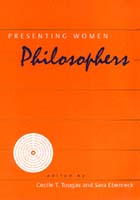 Presenting Women Philosophers
Cecile Tougas
Temple University Press, 2000 Western philosophy has long excluded the work of women thinkers from their canon. Presenting Women Philosophers addresses this exclusion by examining the breadth of women's contributions to Western thought over some 900 years. Editors Cecile T. Tougas and Sara Ebenreck have gathered essays and other writings that reflect women's deep engagement with the meaning of individual experience as well as the continuity of their philosophical concerns and practices. Arranged thematically, the collection ranges across eras and literary genres as it emphasizes the intellectual significance of written work by key figures -- for example, Hildegard of Bingen's visionary writings, Iris Murdoch's fiction, Hannah Arendt's historical narratives, and the oral storytelling in black women's literary tradition. The collection also brings to light the philosophical importance of little-known work by such writers as Mme de Sable and Mme de Condorcet. This wide-ranging collection offers non-philosophers an introduction to women's thought but also promises to engage advanced students of philosophy with new research on unrecognized contributions.
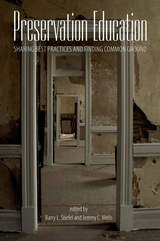 Preservation Education: Sharing Best Practices and Finding Common Ground
Edited by Barry L. Stiefel and Jeremy C. Wells
University Press of New England, 2014 Over the past twenty years, there has been a fundamental shift in the institutional organization of historic preservation education. Historic preservation is the most recent arrival in the collection of built environment disciplines and therefore lacks the pedagogical depth and breadth found in allied endeavors such as architecture and planning. As the first degree programs in preservation only date to the 1970s and the first doctoral programs to the 1990s, new faculty are confronted with pedagogical challenges that are unique to this relatively nascent field. Based on a conference that included educators from around the world, Barry L. Stiefel and Jeremy C. Wells now present a collection that seeks to address fundamental issues of preservation pedagogy, outcome-based education and assessment, and global issues of authenticity and significance in historic preservation. The editors argue that the subject of the analysis has shifted from, “What is the best way to fix a historic building?” to, “What are the best ways for teaching people how to preserve historic properties (and why) according to the various standards that have been established?” This important reconsideration of the state of the field in historic preservation education will appeal to a broad audience across numerous disciplines.
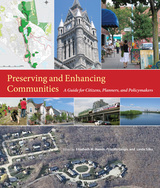 Preserving and Enhancing Communities: A Guide for Citizens, Planners, and Policymakers
Elisabeth M. Hamin
University of Massachusetts Press, 2007 This book starts from the premise that each community chooses its future every day, through the incremental decisions made by planning and zoning boards and other citizen volunteers, as well as professional staff. The challenge is to ensure that these decisions support the preservation of what is special about the community, while still fostering necessary and appropriate growth.
In this volume, twenty-nine experts from a variety of fields describe in very practical terms the "community preservation" approach to these issues. As opposed to the top-down regulatory mechanisms that are sometimes used to manage growth, the contributors favor a more flexible, locally based approach that has proven successful in Massachusetts and elsewhere. They show how residents can be empowered to become involved in local decision-making, building coalitions and expressing their views on a wide range of issues, such as zoning, water and land protection, transportation, historic preservation, economic diversity, affordable housing, and reuse of brown-fields. When done properly, development can enhance the sense of place and provide needed homes and jobs. Done improperly, it can generate sprawl and a multitude of problems.
Preserving and Enhancing Communities will be particularly useful to members of planning and other regulatory boards, as well as students of community planning. The book covers not just typical ways of doing things, but also the full spectrum of innovative and emerging practices. Each chapter includes illustrations and case studies, some from Massachusetts and many from other states. The volume concludes with a set of indicators that communities can use to track their progress in community preservation
and enhancement.
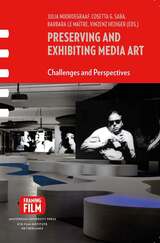 Preserving and Exhibiting Media Art: Challenges and Perspectives
Edited by Julia Noordegraaf, Cosetta Saba, Barbara Le Maitre, and Vinzenz Hediger
Amsterdam University Press, 2013 This important and first-of-its-kind collection addresses the emerging challenges in the field of media art preservation and exhibition, providing an outline for the training of professionals in this field. Since the emergence of time-based media such as film, video and digital technology, artists have used them to experiment with their potential. The resulting artworks, with their basis in rapidly developing technologies that cross over into other domains such as broadcasting and social media, have challenged the traditional infrastructures for the collection, preservation and exhibition of art. Addressing these challenges, the authors provide a historical and theoretical survey of the field, and introduce students to the challenges and difficulties of preserving and exhibiting media art through a series of first-hand case studies. Situated at the threshold between archival practices and film and media theory, it also makes a strong contribution to the growing literature on archive theory and archival practices.
Preserving Archives & Manuscripts
Mary Lynn Ritzenthaler
Society of American Archivists, 2010 The authoritative resource for archivists, manuscript curators, and other responsible for the preservation of archives, manuscripts, and historical collections. It covers the wide range of materials found in such holdings and addresses practical means of implementing preservation programs. The emphasis is on integrating preservation and archival management with a focus on storage, safe handling, and environmental issues. Many illustrations and extensive appendices complement the text.
Ritzenthaler’s classic manual complements and augments Advancing Preservation for Archives and Manuscripts by Elizabeth Joffrion and Michèle V. Cloonan, published in 2020 as volume 5 in the Archival Fundamentals Series III.
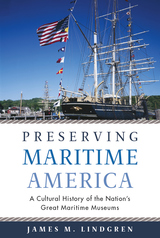 Preserving Maritime America: A Cultural History of the Nation's Great Maritime Museums
James M. Lindgren
University of Massachusetts Press, 2019 The United States has long been dependent on the seas, but Americans know little about their maritime history. While Britain and other countries have established national museums to nurture their seagoing traditions, America has left that responsibility to private institutions. In this first-of-its-kind history, James M. Lindgren focuses on a half-dozen of these great museums, ranging from Salem's East India Marine Society, founded in 1799, to San Francisco's Maritime Museum and New York's South Street Seaport Museum, which were established in recent decades.
Begun by activists with unique agendas—whether overseas empire, economic redevelopment, or cultural preservation—these museums have displayed the nation's complex interrelationship with the sea. Yet they all faced chronic shortfalls, as policymakers, corporations, and everyday citizens failed to appreciate the oceans' formative environment. Preserving Maritime America shows how these institutions shifted course to remain solvent and relevant and demonstrates how their stories tell of the nation's rise and decline as a commercial maritime power.
 Preserving Public Lands for the Future: The Politics of Intergenerational Goods
William R. Lowry
Georgetown University Press, 1998 Comparing national efforts to preserve public lands, William R. Lowry investigates how effectively and under what conditions governments can provide goods for future generations. Providing intergenerational goods, ranging from balanced budgets to space programs and natural environments, is particularly challenging because most political incentives reward short-term behavior. Lowry examines the effect of institutional structure on the public delivery of these goods. He offers a theoretical framework accounting for both the necessary conditions — public demand, political stability, and official commitment to long-term delivery — and constraining factors — the tensions between public agencies and politicians as well as between different levels of government — that determine the ability of a nation to achieve long-term goals. In support of this argument, Lowry evaluates data on park systems from more than one hundred countries and provides in-depth case studies of four — he United States, Australia, Canada, and Costa Rica — to show how and why the delivery of intergenerational goods can vary. For each of the cases, he reviews background information, discusses constraints on agency behavior, and assesses expansion of the park systems and restoration of natural conditions at specific locations. This extensive comparative analysis of the preservation of public lands offers new insights into the capability of nations to pursue long-term goals.
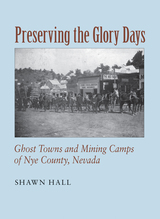 Preserving The Glory Days: Ghost Towns And Mining Camps Of Nye County, Nevada
Shawn Hall
University of Nevada Press, 1999 Nye County is Nevada’s largest and least populated county, but it is also the site of many of the state’s most colorful ghost towns and mining camps. The county’s economy throughout its history has been largely based on its mines--first, exploiting veins of gold and silver, and more recently deposits of raw materials for modern industry, such as molybdenum and barite. It was here that famous boomtowns like Tonopah and Rhyolite sprang up after the discovery of nearby lodes brought in rushes of prospectors and the merchants who supported them. But the county includes many smaller, shorter-lived camps and numerous abandoned stagecoach and railroad stops associated with defunct mining operations.This book offers a lively, informative record of Nevada’s isolated interior. Hall first published a guide to Nye County’s ghost towns in 1981. Since then, he has continued his research into the county’s past and has uncovered much new information and corrected some errors. To prepare this revised and greatly expanded edition, he revisited all 175 sites recorded earlier and has added more than 20 previously unlisted sites.
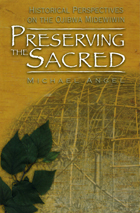 Preserving the Sacred: Historical Perspectives on the Ojibwa Midewiwin
Michael Angel
University of Manitoba Press, 2002 The Midewiwin is the traditional religious belief system central to the world view of Ojibwa in Canada and the US. It is a highly complex and rich series of sacred teachings and narratives whose preservation enabled the Ojibwa to withstand severe challenges to their entire social fabric throughout the 19th and 20th centuries. It remains an important living and spiritual tradition for many Aboriginal people today. ____ The rituals of the Midewiwin were observed by many 19th century Euro-Americans, most of whom approached these ceremonies with hostility and suspicion. As a result, although there were many accounts of the Midewiwin published in the 19th century, they were often riddled with misinterpretations and inaccuracies. ____ Historian Michael Angel compares the early texts written about the Midewiwin, and identifies major, common misconceptions in these accounts. In his explanation of the historical role played by the Midewiwin, he provides alternative viewpoints and explanations of the significance of the ceremonies, while respecting the sacred and symbolic nature of the Midewiwin rituals, songs, and scrolls.
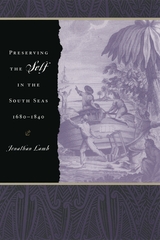 Preserving the Self in the South Seas, 1680-1840
Jonathan Lamb
University of Chicago Press, 2001 The violence, wonder, and nostalgia of voyaging are nowhere more vivid than in the literature of South Seas exploration. Preserving the Self in the South Seas charts the sensibilities of the lonely figures that encountered the new and exotic in terra incognita. Jonathan Lamb introduces us to the writings of South Seas explorers, and finds in them unexpected and poignant tales of selves alarmed and transformed.
Lamb contends that European exploration of the South Seas was less confident and mindful than we have assumed. It was, instead, conducted in moods of distraction and infatuation that were hard to make sense of and difficult to narrate, and it prompted reactions among indigenous peoples that were equally passionate and irregular. Preserving the Self in the South Seas also examines these common crises of exploration in the context of a metropolitan audience that eagerly consumed narratives of the Pacific while doubting their truth. Lamb considers why these halting and incredible journals were so popular with the reading public, and suggests that they dramatized anxieties and bafflements rankling at the heart of commercial society.
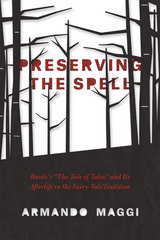 Preserving the Spell: Basile's "The Tale of Tales" and Its Afterlife in the Fairy-Tale Tradition
Armando Maggi
University of Chicago Press, 2015 Fairy tales are supposed to be magical, surprising, and exhilarating, an enchanting counterpoint to everyday life that nonetheless helps us understand and deal with the anxieties of that life. Today, however, fairy tales are far from marvelous—in the hands of Hollywood, they have been stripped of their power, offering little but formulaic narratives and tame surprises.
If we want to rediscover the power of fairy tales—as Armando Maggi thinks we should—we need to discover a new mythic lens, a new way of approaching and understanding, and thus re-creating, the transformative potential of these stories. In Preserving the Spell, Maggi argues that the first step is to understand the history of the various traditions of oral and written narrative that together created the fairy tales we know today. He begins his exploration with the ur-text of European fairy tales, Giambattista Basile’s The Tale of Tales, then traces its path through later Italian, French, English, and German traditions, with particular emphasis on the Grimm Brothers’ adaptations of the tales, which are included in the first-ever English translation in an appendix. Carrying his story into the twentieth century, Maggi mounts a powerful argument for freeing fairy tales from their bland contemporary forms, and reinvigorating our belief that we still can find new, powerfully transformative ways of telling these stories.
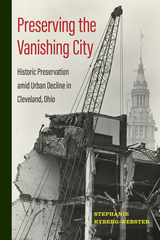 Preserving the Vanishing City: Historic Preservation amid Urban Decline in Cleveland, Ohio
Stephanie Ryberg-Webster
Temple University Press, 2023 Preserving the Vanishing City considers the unique challenges, conditions, and opportunities facing Cleveland’s historic preservation community during the 1970s and 1980s. While pro-preservationists argued for the economic and revitalization benefits stemming from saving and repurposing older buildings, population loss and economic contraction prompted decades of deterioration, underinvestment, vacancy, and abandonment.
Stephanie Ryberg-Webster uncovers the motivations, strategies, and constraints driving Cleveland’s historic preservation sector, led by the public-sector Cleveland Landmarks Commission, nonprofit Cleveland Restoration Society, and a cadre of advocates. She sheds light on the ways in which preservationists confronted severe, escalating, and sustained urban decline, which plagued Cleveland, a prototypical rust-belt industrial city.
Preserving the Vanishing City chronicles the rise of the historic preservation profession in Cleveland and provides six case studies about targeted projects and neighborhood efforts, including industrial heritage, housing preservation and restoration, commercial district revitalization, securing local historic district designations, as well as grassroots organizing, coalition building, and partnerships. Ryberg-Webster also addresses the complexities of historic preservation within the context of rapid racial change in Cleveland’s neighborhoods.
A comprehensive history of preservation within the context of one city’s urban decline, Preserving the Vanishing Cityrecounts the successes, failures, and creative strategies employed to save Cleveland’s built environment.
 Preserving With Purpose: Reimagining Buildings for Community Benefit
Amy Hetletvedt
Island Press, 2025 While prominent buildings like Notre Dame in Paris rise from the ashes, historic buildings in disinvested communities are lost at an alarming rate. The resulting holes in the fabric of the community are not only a loss of structures, but of the stories and the embedded possibilities that the buildings represent.
In Preserving with Purpose: Reimagining Buildings for Community Benefit, architect Amy Hetletvedt unfolds a revolutionary-but-simple vision for re-thinking building conservation in vulnerable communities. It begins with the question: what can be done now—in circumstances or communities when restoration is not wholly fundable, not possible, or potentially not even desirable?
Hetletvedt explores contextual approaches to existing buildings in disinvested communities as an alternative to demolition, explains why these buildings matter, and what communities and professionals can make of them, together.
Preserving With Purpose features profiles and case studies from around the world. Four profiles focus on places facing the challenges of vacancy and abandonment which have, over time, reimagined buildings using the approaches described in the book. The profiles include Project Row Houses in Houston, Texas; The Dorchester Projects and Stony Island Arts Bank in Chicago, Illinois; Menokin in Warsaw, Virginia and the Granby Four Streets in Liverpool, England. Fifteen case studies cover a broader geographic range and are organized into three purposeful interventions: priority, practical and poetic
.
Professionals and community members are encouraged to approach historic buildings creatively and collaboratively; to invest in strategic mending that not only addresses buildings but benefits communities. Preserving with Purpose is a compelling invitation into the beautiful and fruitful middle-ground between ruin and restoration.
The Presidency and Public Policy Making
George C. Edwards
University of Pittsburgh Press, 1986
The premise behind this book is that policy making provides a useful perspective for studying the presidency, perhaps the most important and least understood policy-making institution in the United States. The eleven essays focus on diverse aspects of presidential policy making, providing insights on the presidency and its relationship to other policy-making actors and institutions. Major topics addressed include the environment of presidential policy making and the constraints it places on the chief executive; relationships with those outside the executive branch that are central to presidential policy making; attempts to lead the public and Congress; presidential decision making; and administration or implementation of policies in the executive branch, a topic that has received limited attention in the literature on the presidency.
The Presidency and Public Policy: The Four Arenas of Presidential Power
Robert J. Spitzer
University of Alabama Press, 1982 Spitzer's classic study of presidential power, The Presidency and Public Policy examines the annual domestic legislative programs of US presidents from 1954-1974 to show how and in what ways the characteristics of their proposals affected their success in dealing with Congress (success being defined as Congress's passing the presidents' legislative proposals in the forms offered). Presidential skills matter, but Spitzer demonstrates that the successful application of those skills is relatively easy for some policies and next to impossible for others. Certain consistent patterns predominate regardless of who sits in the Oval Office, and to a great extent those patterns prescribe prseidential behavior.
 The Presidency in the Courts
Glendon A. Schubert, Jr.
University of Minnesota Press, 1957 The Presidency in the Courts was first published in 1957. Minnesota Archive Editions uses digital technology to make long-unavailable books once again accessible, and are published unaltered from the original University of Minnesota Press editions. Do the American courts restrain the President from committing illegal and unconstitutional acts? If so, how? These are the fundamental questions which are answered here through a systematic and comprehensive analysis of the opinions and decisions of the courts themselves. As Clinton Rossiter, author of "The American Presidency," points out, "Too many books on the Presidency deal with the powers of this great office, too few with the restraints that fix its place in our system of government. Students of the system will be grateful to Professor Schubert for this tough-minded, even-tempered, exhaustive study of a neglected aspect of the Presidency." Professor Schubert analyzes hundreds of judicial cases, both federal and state, involving challenges to the legality of presidential action. The period covered is the entire lifetime of the republic and the material is arranged according to the President's major institutional roles, those of chief administrator, chief of state, commander in chief, and chief magistrate. There are chapters on presidential management of public personnel and the public domain, his control of foreign relations and the tariff, his military powers, enemy aliens, the presidential seizure power and other emergency powers, legal sources of presidential power, due process in presidential lawmaking, and the scope of judicial review of presidential action. Both the theory and practice of presidential rule making and adjudication are examined in detail. The book, the first of its kind, reveals how far from actuality are the generally held beliefs regarding the power of the courts versus the power of the Presidency. The significance of such a study is readily apparent in view of the fact that the fate not only of the United States but of Western civilization will hang in the balance of the President's exercise of his official powers during the next decade.
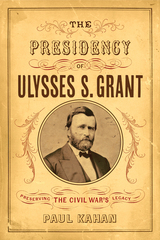 The Presidency of Ulysses S. Grant: Preserving the Civil War's Legacy
Paul Kahan
Westholme Publishing, 2025 A Short History of the Politics of Reconstruction in a Changing America
On December 5, 1876, President Ulysses S. Grant transmitted his eighth and final message to Congress. In reviewing his tenure as president, Grant proclaimed, “Mistakes have been made,” though he assured Congress, his administration’s “failures have been errors of judgment, not of intent.” Until recently, scholars have portrayed Grant as among the country’s worst chief executives. Though the scholarly consensus about Grant’s presidency is changing, the general public knows little, if anything, about his two terms, other than their outsized reputation for corruption. While scandals are undoubtedly part of the story, there is more to Grant’s presidency: Grant faced the Panic of 1873, the severest economic depression in U.S. history, defeated the powerful Senator Charles Sumner on the annexation of Cuba, and deftly avoided war with Spain while laying the groundwork for the “special relationship” between Great Britain and the United States. Grant’s efforts to ensure justice for African Americans and American Indians, however, were undercut by his own decisions and by the contradictory demands of the various constituencies that made up the Republican Party.
In The Presidency of Ulysses S. Grant: Preserving the Civil War’s Legacy, historian Paul Kahan focuses on the unique political, economic, and cultural forces unleashed by the Civil War and how Grant addressed these issues during his tumultuous two terms as chief executive. A timely reassessment, The Presidency of Ulysses S. Grant sheds new light on the business of politics in the decade after the Civil War and portrays an energetic and even progressive executive whose legacy has been overshadowed by both his wartime service and his administration’s many scandals.
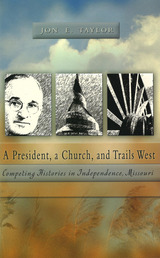 A President, a Church and Trails West: Competing Histories in Independence, Missouri
Jon E. Taylor
University of Missouri Press, 2008 Over the past century, three nationally significant histories have vied for space and place in Independence, Missouri. Independence was declared Zion by Joseph Smith, served as a gathering and provisioning point for trails west, and was called home by President Harry S. Truman for sixty-four years. Historian Jon E. Taylor has integrated research from newspapers, public documents, oral histories, and private papers to detail how the community has preserved and remembered these various legacies. Truman’s legacy would appear to have been secured in Independence via three significant designations—his presidential library opened there in 1957, his neighborhood was designated a national historic landmark in 1972, and his home was declared a national historic site in 1982. However, Taylor argues that Truman’s seeming dominance in the community’s memory is in fact endangered by competition from the other aspects of the town’s historical heritage. Taylor considers the role Mormon history has played in the city's history and chronicles how the Reorganized Church of Jesus Christ of Latter Day Saints returned to Independence to fulfill Joseph Smith's dream of creating Zion in the city, a situation that impacted neighborhoods near the Truman home. Taylor also examines the city's fascination with the Santa Fe, Oregon, and California trails, detailing how that history was lost and remembered and is now immortalized on the Independence square and in the National Frontier Trails Museum. In the 1980s, the city council reduced the size of the Truman Heritage District, created to maintain Truman’s association with his neighborhood, after church opposition. At the same time, city officials pushed to make Independence a major tourist destination, a move largely dependent upon the city capitalizing on its association with Truman. These inconsistent policies and incongruous goals have led to innumerable changes in the landscape Truman enjoyed during his legendary morning walks. A President, a Church, and Trails West chronicles one city’s struggle to preserve its history and the built environment. Taylor places the role of preservation in Independence not only within the larger context of preservation in the United States but also within the context of American environmental history. This volume is sure to appeal to anyone interested in public history, historic preservation, history and memory, and local history.
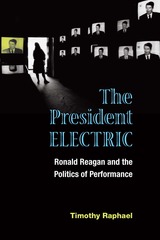 The President Electric: Ronald Reagan and the Politics of Performance
Timothy Raphael
University of Michigan Press, 2011 "In this illuminating, multi-pronged cultural and performance history of such phenomena as Chautauqua and radio, movies, and electrical technology, Timothy Raphael puts together a compelling and sometimes revelatory narrative of how commandingly Reagan mastered the matrix of performance, technology, media, celebrity, and the 'republic of consumption' he came of age in."
---Dana Nelson, Vanderbilt University "Garry Wills and others have written well on the phenomenon of Ronald Reagan, the actor-president, but this is the first book by a real authority---trained in performance and fully reflective about it from the inside . . . unquestionably an important contribution to the disciplinary fields of American studies and performance studies, and an important contribution to public affairs."
---Joseph Roach, Yale University When Ronald Reagan first entered politics in 1965, his public profile as a performer in radio, film, television, and advertising and his experience in public relations proved invaluable political assets. By the time he left office in 1989, the media in which he trained had become the primary source for generating and wielding political power. The President Electric: Ronald Reagan and the Politics of Performance reveals how the systematic employment of the techniques and technologies of mass-media performance contributed to Reagan’s rise to power and defined his style of governance. The President Electric stands out among books on Reagan as the first to bring the rich insights of the field of performance studies to an understanding of the Reagan phenomenon, connecting Reagan's training in electronic media to the nineteenth-century notion of the "fiat of electricity"---the emerging sociopolitical power of three entities (mechanical science, corporate capitalism, and mass culture) that electric technology made possible. The book describes how this new regime of cultural and political representation shaped the development of the electronic mass media that transformed American culture and politics and educated Ronald Reagan for his future role as president. Timothy Raphael is Assistant Professor of Visual and Performing Arts and Director of the Center for Immigration at Rutgers University, Newark. Photo: © David H. Wells/Corbis
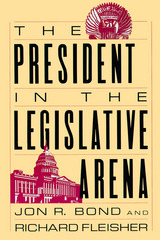 The President in the Legislative Arena
Jon R. Bond and Richard Fleisher
University of Chicago Press, 1990 In recent years, the executive branch's ability to maneuver legislation through Congress has become the measure of presidential success or failure. Although the victor of legislative battles is often readily discernible, debate is growing over how such victories are achieved.
In The President in the Legislative Arena, Jon R. Bond and Richard Fleisher depart dramatically from the concern with presidential influence that has dominated research on presidential-congressional relations for the past thirty years. Of the many possible factors involved in presidential success, those beyond presidential control have long been deemed unworthy of study. Bond and Fleisher disagree. Turning to democratic theory, they insist that it is vitally important to understand the conditions under which the executive brance prevails, regardless of the source of that success. Accordingly, they provide a thorough and unprecedented analysis of presidential success on congressional roll-call votes from 1953 through 1984. Their research demonstrates that the degree of cooperation between the two branches is much more systematically linked to the partisan and ideological makeup of Congress than to the president's bargaining ability and popularity. Thus the composition of Congress "inherited" by the president is the single most significant determinant of the success or failure of the executive branch.
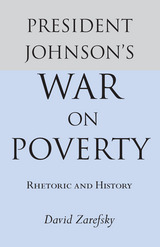 President Johnson's War On Poverty: Rhetoric and History
David Zarefsky
University of Alabama Press, 1986 Illustrates the interweaving of rhetorical and historical forces in shaping public policy
In January 1964, in his first State of the Union address, President Lyndon Johnson announced a declaration of “unconditional war” on poverty. By the end of the year the Economic Opportunity Act became law. The War on Poverty illustrates the interweaving of rhetorical and historical forces in shaping public policy. Zarefsky suggest that an important problem in the War on Poverty lay in its discourse. He assumes that language plays a central role in the formulation of social policy by shaping the context within which people view the social world. By terming the anti-poverty effort a war, President Johnson imparted significant symbolism to the effort: it called for total victory and gave confidence that the “war” was winnable. It influenced the definition of the enemy as an intergenerational cycle of poverty, rather than the shortcomings of the individual; and it led to the choice of community action, manpower programs, and prudent management as weapons and tactics. Each of these implications involves a choice of language and symbols, a decision about how to characterize and discuss the world. Zarefsky contends that each of these rhetorical choices was helpful to the Johnson administration in obtaining passage of the Economic Opportunity Ac of 1964, but that each choice invited redefinition or reinterpretation of a symbol in a way that threatened the program.
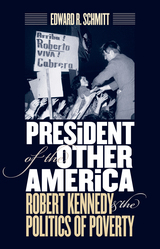 President of the Other America: Robert Kennedy and the Politics of Poverty
Edward R. Schmitt
University of Massachusetts Press, 2010 Robert Kennedy's abbreviated run for the presidency in 1968 has assumed almost mythical proportions in American memory. His campaign has been romanticized because of its tragic end, but also because of the foreign and domestic crises that surrounded it. Yet while most media coverage initially focused on Kennedy's opposition to the Vietnam War as the catalyst of his candidacy, another issue commanded just as much of his attention. That issue was poverty. Stumping across the country, he repeated the same antipoverty themes before college students in Kansas and Indiana, loggers and women factory workers in Oregon, farmers in Nebraska, and business groups in New York. Although his calls to action sometimes met with apathy, he refused to modify his message. "If they don't care," he told one aide, "the hell with them."
As Edward R. Schmitt demonstrates, Kennedy's concern with the problem of poverty was not new. Although critics at the time accused him of opportunistically veering left in order to outflank an unpopular president, a closer look at the historical record reveals a steady evolution rather than a dramatic shift in his politics.
President Trump Sells California
Duke Q. Wallace
Parkhurst Brothers, Inc., 2016 A short political satire in which a President Trump nationalizes the Girl Scouts, privatizes the Supreme Court, and sells the state of California—his way of paying off the Federal debt. Nine brief chapters, each one resolving a real national issue with an excess of creativity and zeal. What happens when the zeal is spent?
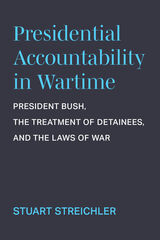 Presidential Accountability in Wartime: President Bush, the Treatment of Detainees, and the Laws of War
Stuart Streichler
University of Michigan Press, 2023 The American presidency has long tested the capacity of the system of checks and balances to constrain executive power, especially in times of war. While scholars have examined presidents starting military conflicts without congressional authorization or infringing on civil liberties in the name of national security, Stuart Streichler focuses on the conduct of hostilities. Using the treatment of war-on-terror detainees under President George W. Bush as a case study, he integrates international humanitarian law into a constitutional analysis of the repercussions of presidential war powers for human rights around the world. Putting President Bush’s actions in a wider context, Presidential Accountability in Wartime begins with a historical survey of the laws of war, with particular emphasis on the 1949 Geneva Conventions and the Nuremberg Tribunal. Streichler then reconstructs the decision-making process that led to the president’s approval of interrogation methods that violated Geneva’s mandate to treat wartime captives humanely. While taking note of various accountability options—from within the executive branch to the International Criminal Court—the book illustrates the challenge in holding presidents personally responsible for violating the laws of war through an in-depth analysis of the actions taken by Congress, the Supreme Court, and the public in response. In doing so, this book not only raises questions about whether international humanitarian law can moderate wartime presidential behavior but also about the character of the presidency and the American constitutional system of government.
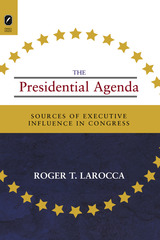 PRESIDENTIAL AGENDA: SOURCES OF EXECUTIVE INFLUENCE IN CONGRESS
ROGER T LAROCCA
Ohio State University Press, 2006 It is well understood that the president is a powerful agenda-setting influence in Congress. But how exactly does the president, who lacks any formal power in early stages of the legislative process, influence the congressional agenda? In The Presidential Agenda, Roger T. Larocca argues that the president’s agenda-setting influence arises from two informal powers: the ability to communicate directly to voters and the ability to control the expertise of the many executive agencies that advise Congress on policy.
Larocca develops a theoretical model that explains how the president can raise the public salience of issues in his major addresses, long accepted as one of the president’s strongest agenda-setting tools. He also develops a theoretical model that explains how control over executive agency expertise yields a more reliable and persistent influence on the congressional agenda than presidential addresses.
The Presidential Agenda tests these theoretical models with an innovative empirical study of presidential agenda setting. Using data from all House and Senate Commerce Committee bills from 1979 to 2002, Larocca converts information about bills into information about policy issues and then traces the path of presidential influence through the committee and floor stages of legislative consideration.
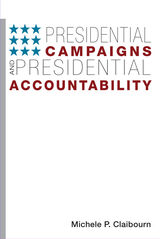 Presidential Campaigns and Presidential Accountability
Michele P. Claibourn
University of Illinois Press, 2011 In investigating the presidential campaigns and early administrations of Barack Obama, George W. Bush, and Bill Clinton, Presidential Campaigns and Presidential Accountability shows how campaign promises are realized in government once the victor is established in the Oval Office. To measure correlations between presidential campaigns and policy-making, Michele P. Claibourn closely examines detailed campaign advertising information, survey data about citizen's responses to campaigns, processes that create expectations among constituents, and media attention and response to candidates. Disputing the notion that presidents ignore campaign issues upon being elected, Presidential Campaigns and Presidential Accountability contends that candidates raise issues that matter and develop ideas to address these issues based on voter reactions. Conventional disappointment in presidential campaigns stems from a misunderstanding of the role that presidents play in a system of separate institutions sharing power, and Claibourn forces us to think about presidential campaigns in the context of the presidency--what the president realistically can and cannot do. Based on comparisons of the Clinton, Bush, and Obama campaigns and the first years of the subsequent presidential administrations, Claibourn builds a generalized theory of agenda accountability, showing how presidential action is constrained by campaign agendas.
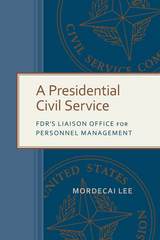 A Presidential Civil Service: FDR's Liaison Office for Personnel Management
Mordecai Lee
University of Alabama Press, 2016 A masterful account of the founding of President Franklin D. Roosevelt’s Liaison Office for Personnel Management (LOPM), and his use of LOPM to demonstrate the efficacy of a management-oriented federal civil service over a purely merit-based Civil Service Commission
A Presidential Civil Service offers a comprehensive and definitive study of President Franklin Delano Roosevelt’s Liaison Office for Personnel Management (LOPM). Established in 1939 following the release of Roosevelt’s Brownlow Committee report, LOPM became a key milestone in the evolution of the contemporary executive-focused civil service.
The Progressive Movement of the nineteenth and early twentieth centuries comprised groups across the political spectrum with quite different. All, however, agreed on the need for a politically autonomous and independent federal Civil Service Commission (CSC) to eliminate patronage and political favoritism. In A Presidential Civil Service, public administration scholar Mordecai Lee explores two models open to later reformers: continuing a merit-based system isolated from politics or a management-based system subordinated to the executive and grounded in the growing field of managerial science.
Roosevelt’s 1937 Brownlow Committee, formally known as the President’s Committee on Administrative Management, has been widely studied including its recommendation to disband the CSC and replace it with a presidential personnel director. What has never been documented in detail was Roosevelt’s effort to implement that recommendation over the objections of Congress by establishing the LOPM as a nonstatutory agency.
The role and existence of LOPM from 1939 to 1945 has been largely dismissed in the history of public administration. Lee’s meticulously researched A Presidential Civil Service, however, persuasively shows that LOPM played a critical role in overseeing personnel policy. It was involved in every major HR initiative before and during World War II. Though small, the agency’s deft leadership almost always succeeded at impelling the CSC to follow its lead.
Roosevelt’s actions were in fact an artful and creative victory, a move finally vindicated when, in 1978, Congress abolished the CSC and replaced it with an Office of Personnel Management headed by a presidential appointee. A Presidential Civil Service offers a fascinating account and vital reassessment of the enduring legacy of Roosevelt’s LOPM.
 Presidential Constitutionalism in Perilous Times
Scott M. Matheson Jr.
Harvard University Press, 2009 From the Constitution’s adoption, presidents, Congress, judges, scholars, the press, and the public have debated the appropriate scope of presidential power during a crisis, especially when presidents see bending or breaking the rules as necessary to protect the country from serious, even irreparable, harm.
Presidential Constitutionalism in Perilous Times examines this quandary, from Abraham Lincoln’s suspension of the writ of habeas corpus during the Civil War, Woodrow Wilson’s enforcement of the Espionage Act of 1917 during World War I, Franklin D. Roosevelt’s evacuation and internment of West Coast Japanese during World War II, Harry S. Truman’s seizure of the steel mills during the Korean War to George W. Bush’s torture, surveillance, and detention programs following the September 11, 2001, terrorist attacks.
Presidents have exercised extraordinary power to protect the nation in ways that raised serious constitutional concerns about individual liberties and separation of powers. By looking at these examples through different constitutional perspectives, Scott Matheson achieves a deeper understanding of wartime presidential power in general and of President Bush’s assertions of executive power in particular. America can function more effectively as a constitutional democracy in an unsafe world, he argues, if our leaders embrace an approach to presidential power that he calls executive constitutionalism.
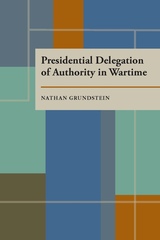 Presidential Delegation of Authority in Wartime
Nathan Grundstein
University of Pittsburgh Press, 1961
Administration in time of war has come to revolve around the President, and much of the administrative authority of the President is then delegated to extralegal agents. Grundstein's analysis of the experiences of World War I show that such delegation is inevitable: From the beginning of the war Congress delegated many powers to the Chief Executive, who, of necessity, named others to act for him in the prosecution of the war. Furthermore, Congress granted these administrative powers without formally establishing new administrative agencies with attendant Congressional oversight. Though constitutionally the President's powers are exclusively executive as distinguished from administrative, beginning with WWI, and increasing during WWII, the President has become in effect the administrator-in-chief.
Nathan Grundstein traces the evolution of a new body of administrative law delineating the unique patterns of wartime organization and administration that emerged during the twentieth century.
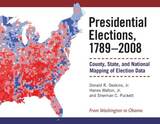 Presidential Elections, 1789-2008: County, State, and National Mapping of Election Data
Donald R. Deskins, Jr., Hanes Walton, Jr., and Sherman C. Puckett
University of Michigan Press, 2010 "Hanes Walton, Donald Deskins, and Sherman Puckett have produced a highly impressive collection and valuable contribution to the literature on American electoral politics. This work is indispensable for academic libraries, political scientists, historians, and serious students of American government."
---Immanuel Ness, Professor, Department of Political Science, Brooklyn College, City University of New York "Massive amounts of information about presidential elections which are not readily available elsewhere. Unprecedented coverage in one volume of every single American presidential election."
---James Gimpel, Professor of Government, University of Maryland "This is an extraordinary research endeavor; the most comprehensive set of aggregate election data ever assembled. Painstakingly researched, this color-coded volume presents data for every presidential election from 1789 to 2008. Unlike most, the wide ranging narrative for this atlas identifies racial patterns in the vote. Everyone who studies or is interested in presidential elections should have this impressive collection of statistical data in their libraries. A visual gem for the digital age."
---Robert Smith, Professor of Political Science, San Francisco State University "Presidential Elections, 1789-2008 is a genuine tour de force that captures in an extremely accessible and comprehensive way the electoral geography of America's presidential elections, from Washington to Obama. An invaluable addition to the library of all those interested in presidential elections and U.S. politics."
---Marion Orr, Frederick Lippitt Professor of Public Policy and Professor of Political Science, Brown University "This volume sets an extraordinarily high standard in scholarship, completeness, description, and explanation of our political process. It has been said that all politics are local, but never before has this been demonstrated with such clarity and panache, using the simple method of standardized tables summarizing voting, then showing state and county breakdowns of the numbers, greatly strengthened by beautiful full-color maps and cartograms. Every scholar of politics and democracy will benefit from the work laid out in this volume."
---Keith Clarke, Professor of Geography, University of California, Santa Barbara Presidential Elections is an almanac of the popular vote in every presidential election in American history, analyzed at the county level with histories of each campaign, graphs, and stunning four-color maps. Most Americans are familiar with the crude red state/blue state maps used by commentators and campaign strategists---and even, for want of an alternative, by many academics. In providing a higher-resolution view of voting behavior the authors of this new volume enable examination of local and regional political trends that are invisible in state-level aggregations. Presidential Elections will enable scholars to more subtly analyze voting behavior, campaigns, and presidential politics; commentators will use it to analyze trends and trace the historical evolution of new coalitions and voting blocs; strategists will use it to plan campaigns and mobilize constituencies. Presidential Elections will become the standard almanac on the subject: a required resource for academic and public libraries, as well as for scholars, consultants, and pundits nationwide. Donald R. Deskins, Jr., is a political geographer and Emeritus Professor of Sociology and a former Associate Dean of the Horace H. Rackham School of Graduate Studies at the University of Michigan. Hanes Walton, Jr., is Professor of Political Science at the University of Michigan. He also holds positions as Senior Research Scientist at the Center for Political Studies and as a faculty member in the Center for Afroamerican and African Studies. Sherman C. Puckett is a Ph.D. graduate of The University of Michigan in urban and regional planning. He was a mayoral appointee in the data processing department of the Coleman A. Young administration in the City of Detroit and recently retired from Wayne County government as manager of technology, geographic information systems, and development of maintenance management systems.
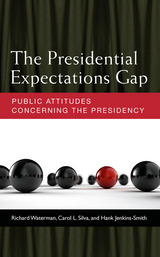 The Presidential Expectations Gap: Public Attitudes Concerning the Presidency
Richard Waterman, Carol L. Silva, and Hank Jenkins-Smith
University of Michigan Press, 2016 For decades, public expectations of U.S. presidents have become increasingly excessive and unreasonable. Despite much anecdotal evidence, few scholars have attempted to test the expectations gap thesis empirically. This is the first systematic study to prove the existence of the expectations gap and to identify the factors that contribute to the public’s disappointment in a given president. Using data from five original surveys, the authors confirm that the expectations gap is manifest in public opinion. It leads to lower approval ratings, lowers the chance that a president will be reelected, and even contributes to the success of the political party that does not hold the White House in congressional midterm elections. This study provides important insights not only on the American presidency and public opinion, but also on citizens’ trust in government.
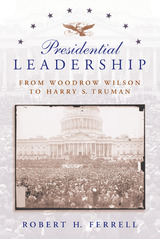 Presidential Leadership: From Woodrow Wilson to Harry S. Truman
Robert H. Ferrell
University of Missouri Press, 2005
Ever since the presidency of Richard M. Nixon, scholars have been in a quandary over how much they really know about our country’s presidents. Nixon, as is now understood, was unstable in personality. The signs appeared well before the discovery of the infamous Watergate tapes, an appalling example of what the presidency could come to. Many Americans have difficulty penetrating the public persona of their leaders. But to know the private side of such figures—the cores of their being—is important, because this side often governs what they do publicly.
In Presidential Leadership, Robert H. Ferrell examines four sometimes maligned, sometimes misunderstood presidents: Woodrow Wilson, Warren G. Harding, Calvin Coolidge, and Harry S. Truman. Along with these portraits, Ferrell incorporates comments on Hoover and Franklin Delano Roosevelt as well as key figures in each president’s administration. Also included in this volume is historian John A. Garraty’s interview with Ferrell on American foreign policy from 1919 to 1945.
As is his style, Ferrell draws from many sources previously untapped. In the case of Wilson, Ferrell relies on the diary of Colonel Edward M. House, who served under Wilson during his presidency. Ferrell uses White House physician Joel T. Boone’s diary to provide an insider’s look at Harding, Coolidge, and Hoover. In dealing with these presidents, Ferrell debunks long-held myths and approaches the presidencies with fresh insights into what drove them to make the decisions they made.
Throughout the book, Ferrell emphasizes the personal styles of each president. He not only shows how they made their own determinations but also evaluates those whom they appointed to important positions. Scholars of American history will welcome this insightful look at the men who saw the United States through the first half of the twentieth century.
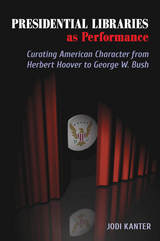 Presidential Libraries as Performance: Curating American Character from Herbert Hoover to George W. Bush
Jodi Kanter
Southern Illinois University Press, 2016 How do the funding, setting architecture, and exhibition of a presidential library shape our understanding of the president’s character? And how do diverse performances of the presidency create radically different opportunities for the practice of American citizenship? In Presidential Libraries as Performance: Curating American Character from Herbert Hoover to George W. Bush, Jodi Kanter analyzes presidential libraries as performances that encourage visitors to think in particular ways about executive leadership and about their own roles in public life.
Kanter considers the moments in the presidents’ lives the museums choose to interpret, and not to interpret, and how the libraries approach common subjects in the presidential museum narrative—the presidents’ early years in relation to cultural ideals, the libraries’ representations of presidential failures, personal and political, and the question of presidential legacy. Identifying the limited number of strategies the libraries currently use to represent the diversity of the American experience and American character, Kanter offers concrete suggestions for reinventing and reshaping the practices of museum professionals and visitors within the walls of these institutions.
Presidential museums can tell us important things about the relationships between performance and politics, entertainment and history, and leaders and the people they lead. Kanter demonstrates how the presidential libraries generate normative narratives about individual presidents, historical events, and what it means to be an American.
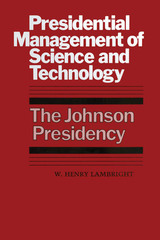 Presidential Management of Science and Technology: The Johnson Presidency
By W. Henry Lambright
University of Texas Press, 1985 How do science and technology issues become important to a particular presidency? Which issues gain priority? How? Why? What is the role of the presidency in the adoption of national policies affecting science and technology? In their implementation? How does the presidency try to curtail certain programs? Eliminate others? Or rescue programs Congress might seek to terminate? How does implementation vary between a president's own program and one that is inherited? Such are the questions raised in this book, one of the first to address the relationship between scientists, few of whom have political backgrounds, and presidents, few of whom are knowledgeable in matters of science and technology. Drawing on extensive research performed at the Lyndon B. Johnson Library in Austin, Texas, and the National Archives in Washington, as well as on secondary sources and interviews, W. Henry Lambright describes, discusses, and analyzes this relationship and shows how one presidency set its agenda, adopted, implemented, and curtailed or eliminated science and technology programs. Twenty-four case studies of specific decision processes occurring in the era of Lyndon Johnson anchor the book in the world of real events. Some programs adopted under Johnson are now all but forgotten, such as the Manned Orbiting Laboratory, nuclear desalting, and electronic barrier. The effects of many more, initiated, maintained, or enlarged under LBJ, lasted far beyond his administration. These include environmental pollution control, Project Apollo, and the application of Agent Orange in Vietnam. Finally, there are those that were redirected, placed on hold, or terminated under Johnson, such as the supersonic transport, antiballistic missile, and Project Mohole. In this important book, Lambright has provided a framework for analyzing how the presidency as an institution deals with such issues, and he has established a strong foundation on which all future students of presidential policy management can build.
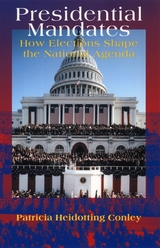 Presidential Mandates: How Elections Shape the National Agenda
Patricia Heidotting Conley
University of Chicago Press, 2001 Presidents have claimed popular mandates for more than 150 years. How can they make such claims when surveys show that voters are uninformed about the issues? In this groundbreaking book, Patricia Conley argues that mandates are not mere statements of fact about the preferences of voters. By examining election outcomes from the politicians' viewpoint, Conley uncovers the inferences and strategies—the politics—that translate those outcomes into the national policy agenda.
Presidents claim mandates, Conley shows, only when they can mobilize voters and members of Congress to make a major policy change: the margin of victory, the voting behavior of specific groups, and the composition of Congress all affect their decisions. Using data on elections since 1828 and case studies from Truman to Clinton, she demonstrates that it is possible to accurately predict which presidents will ask for major policy changes at the start of their term. Ultimately, she provides a new understanding of the concept of mandates by changing how we think about the relationship between elections and policy-making.
PRESIDENTIAL MUSINGS FROM THE MERIDIAN: REFLECTIONS ON THE NATURE OF GEOGRAPHY
M. DUANE NELLIS
West Virginia University Press, 2005
For decades, presidents of the Association of American Geographers have written insightful columns in the AAG Newsletter. One of the most popular sections of the newsletter, these columns illustrate the changes and consistencies of geography over the past thirty-four years. They offer an insight into the past of the geography discipline and a broader perspective on the future. Previously inaccessible even to most professional geographers, the Presidential Columns will now be available in Presidential Musings from the Meridian: Reflections of the Nature of Geography.
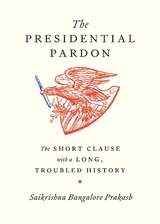 The Presidential Pardon: The Short Clause with a Long, Troubled History
Saikrishna Bangalore Prakash
Harvard University Press Astonishing, unconstrained, and often unsettling—the presidential pardon is one of the most powerful tools in American government, and this indispensable book is your guide to how it defines the presidency, justice, and politics.
The Constitution’s Pardon Clause grants the president a power unmatched in scope and consequence. In The Presidential Pardon, legal scholar Saikrishna Prakash explores how this brief clause has grown into the most expansive and controversial tool of the modern presidency.
Originally intended as a mechanism of mercy—to temper harsh laws and foster reconciliation—the pardon was once used with solemnity and circumspection. Today, it has evolved into a blunt and potent political instrument. Presidents use it to shield allies, reward supporters, fulfill campaign promises, and issue sweeping pardons to make a political statement. In January 2025, for instance, the outgoing and incoming presidents issued major pardons—one to protect relatives and allies, the other to fulfill a promise to his electoral coalition. These actions mark a turning point: the pardon power is no longer a curious exception to politics but increasingly a feature of it. Pardons have become a continuation of politics by other means.
Prakash, a preeminent expert on constitutional law and the executive branch of government, delivers an engaging and accessible analysis of this transformation. The Presidential Pardon brings together little-known history, sharp political insight, and learned constitutional interpretation in a timely examination of executive power. As the partisan exercise of pardon grows more routine, Prakash asks: Can our rule of law survive a presidential power that is checked by no one?
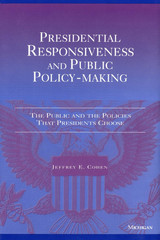 Presidential Responsiveness and Public Policy-Making: The Publics and the Policies that Presidents Choose
Jeffrey E. Cohen
University of Michigan Press, 1999 We expect a president to respond to public opinion as an elected official in a democracy. Indeed, the president needs public support to overcome opposition to his policies in Congress and the bureaucracy. At the same time the president may want to pursue policies that do not have widespread support. How does public opinion affect presidential policy making? Jeffrey Cohen finds that presidents are responsive to the public in selecting issues to focus on. If an issue has captured the interest of the people, then the president will focus on that issue. Cohen finds that having chosen to work on an issue, presidents pay less attention to public opinion when making a policy. The president will try to maintain control over the details of the policy so that the outcome fits his policy agenda.
Cohen examines the way presidents from Eisenhower through Clinton have dealt with public opinion in policy making. He uses case studies of issues such as Clinton and gays in the military, Bush and the extension of unemployment benefits, and Kennedy and cutting the income tax, to explore the relationship between presidents and public opinion. In addition Cohen uses a quantitative analysis of State of the Union addresses and positions on roll call votes of presidents from Eisenhower through George Bush to test his theories.
This book should appeal to political scientists and historians interested in the presidency and in public opinion, as well as general readers interested in the history of the American presidency.
Jeffrey Cohen is Professor of Political Science, Fordham University.
Presidential Selection
Alexander Heard and Michael Nelson, eds.
Duke University Press, 1987 This study incorporates three important themes into the study of presidential selection: What are the international implications of how the Unites States chooses its presidents? How does the process affect other nations? Does it enhance or diminish the ability of the United States to deal effectively with the rest of the world? How do the changing characteristics of the the presidential selection process affect the shaping of public policies, and vice versa? For example, how have changes in citizen participation, campaign technologies, and campaign finance laws altered the balance of political power among institutions and interests? What is the influence of the Constitution on presidential selection, as in the prescribed qualifications for the office and in provisions for unusual circumstances?
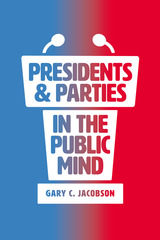 Presidents and Parties in the Public Mind
Gary C. Jacobson
University of Chicago Press, 2019 How is Donald Trump’s presidency likely to affect the reputation and popular standing of the Republican Party? Profoundly, according to Gary C. Jacobson. From Harry S. Truman to Barack Obama, every postwar president has powerfully shaped Americans’ feelings, positive or negative, about their party. The effect is pervasive, influencing the parties’ reputations for competence, their perceived principles, and their appeal as objects of personal identification. It is also enduring, as presidents’ successes and failures continue to influence how we see their parties well beyond their time in office.
With Presidents and Parties in the Public Mind, Gary C. Jacobson draws on survey data from the past seven administrations to show that the expansion of the executive branch in the twentieth century that gave presidents a greater role in national government also gave them an enlarged public presence, magnifying their role as the parties’ public voice and face. As American politics has become increasingly nationalized and president-centered over the past few decades, the president’s responsibility for the party’s image and status has continued to increase dramatically. Jacobson concludes by looking at the most recent presidents’ effects on our growing partisan polarization, analyzing Obama’s contribution to this process and speculating about Trump’s potential for amplifying the widening demographic and cultural divide.
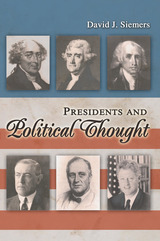 Presidents and Political Thought
David J. Siemers
University of Missouri Press, 2009 “What did the president know and when did he know it?” takes on a whole new meaning in Presidents and Political Thought. Though political philosophy is sometimes considered to be dry and abstract, many of our presidents have found usable ideas embedded within it. In this first comparative study of presidents and political theory, David Siemers examines how some of them have applied this specialized knowledge to their job. Presidents and Political Thought explores the connection between philosophy and practical politics through a study of six American chief executives: John Adams, Thomas Jefferson, James Madison, Woodrow Wilson, Franklin D. Roosevelt, and Bill Clinton. Writing at the intersection of politics, history, and philosophy, Siemers combines his extensive understanding of political philosophy with careful research and analysis of individual presidents to produce provocative and astute judgments about how their understanding of political theory affected their performance. Each chapter examines a particular president’s attitude about political theory, the political theorists he read and admired, and the ways in which he applied theory in his activities as president. Viewing presidents through the lens of political theory enables Siemers to conclude that Madison and Adams have been significantly underrated. Wilson is thought to have abandoned his theoretical viewpoint as president, but actually, he just possessed an unorthodox interpretation of his favorite thinker, Edmund Burke. Often thought to be so pragmatic or opportunistic that they lacked any convictions, FDR and Clinton gained their orientations to politics from political theory. These and other insights suggest that we cannot understand these presidencies without being more aware of the ideas the presidents brought to the office. Siemers’s study takes on special relevance as the United States experiences regime change and a possible party realignment because, as he notes, Barack Obama has read and learned from political theory, too. Avoiding much of the jargon that often accompanies political theory, this book demonstrates the relevance of political theory in the real world, chronicling both the challenges and potentially rich payoffs when presidents conceive of politics not just as a way to reward friends and punish enemies, but as a means to realize principles.
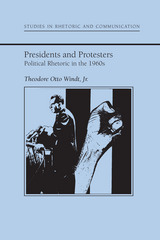 Presidents and Protestors: Political Rhetoric in the 1960s
Theodore O. Windt
University of Alabama Press, 1990 An excellent and lucid introduction to the study of political rhetoric
The decade of the 1960s was a time of passionate politics and resounding rhetoric. The “resounding rhetoric,” from Kennedy’s celebrated inaugural address, to the outlandish antics of the Yippies, is the focus of this book. The importance of this volume is its consideration of both people in power (presidents) and people out of power (protesters), and its delineation of the different rhetorical bases that each had to work from in participating in the politics of the 1960s.
Presidents and Protesters places rhetorical acts within their specific political contexts, changing the direction of previous rhetorical studies from the sociological to the historical-political. Above all, this is an intellectual history of the 1960s as seen through the rhetoric of the participants, which ultimately shows that the major participants utilized every form of political discourse available and, consequently, exhausted not only themselves but the rhetorical forms as well.
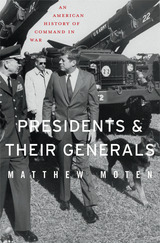 Presidents and Their Generals: An American History of Command in War
Matthew Moten
Harvard University Press, 2014 Since World War II, the United States has been engaged in near-constant military conflict abroad, often with ill-defined objectives, ineffectual strategy, and uncertain benefits. In this era of limited congressional oversight and “wars of choice,” the executive and the armed services have shared the primary responsibility for making war. The negotiations between presidents and their generals thus grow ever more significant, and understanding them becomes essential.
Matthew Moten traces a sweeping history of the evolving roles of civilian and military leaders in conducting war, demonstrating how war strategy and national security policy shifted as political and military institutions developed, and how they were shaped by leaders’ personalities. Early presidents established the principle of military subordination to civil government, and from the Civil War to World War II the president’s role as commander-in-chief solidified, with an increasingly professionalized military offering its counsel. But General Douglas MacArthur’s insubordination to President Harry Truman during the Korean War put political-military tensions on public view. Subsequent presidents selected generals who would ally themselves with administration priorities. Military commanders in Vietnam, Iraq, and Afghanistan did just that—and the results were poorly conceived policy and badly executed strategy.
The most effective historical collaborations between presidents and their generals were built on mutual respect for military expertise and civilian authority, and a willingness to negotiate with candor and competence. Upon these foundations, future soldiers and statesmen can ensure effective decision-making in the event of war and bring us closer to the possibility of peace.
|
|
